This Japan Travel guide is all you need to plan a trip to Japan. Japan is captivating. It perfectly mixes the traditional with the modern. A cultural hub that is also one of the leading economic and technological centres of the world. Gods, shrines and traditional customs sit side by side with cutting edge technologies and trendy pop culture, and there is always something new to experience on a visit. The kindest of people who welcome you with a smile. It’s a special place, a must visit!
“The whole of Japan is a pure invention. There is no such country, there are no such people. The Japanese people are simply a mode of style, an exquisite fancy of art.” — Oscar Wilde
Amazed. In awe. In LOVE. Japan had been on my bucket list for years, it just didn’t happen. It is my son’s dream destination (hello.. Manga fan:). So we decided to take him to his dream place and our gift for his 18th and grad. it didn’t take long to see how disciplined & polite people of Japan are, the clean streets, to no talking in trains, everything screams discipline. Japan is such an unique country, it can mix its ancient history and traditions, with its incredible modernization. Japan’s history has existed for a few thousand years now, and that until this day a lot of it remains very much alive.After travelling to many places around the world, I can tell you there is no place like Japan anywhere in the world. If you have not visited Japan, then you need to add Japan to your travel bucket list. I hope this Japan travel Guide will help you plan a dream vacation. You will be fascinated by its history, traditions, and culture.
To rise up and shine, smiling and joyful, lot has to be learnt. Cheers to patience and politeness.
_________________________________________
Table of Contents:
_________________________________________
_______________________________________
Introduction
All what you might have heard many times before is true, Japan is such a unique country. its interesting how it can mix its ancient history and traditions, with its incredible modernization. Rising up from ashes, smiling always. Japan’s history has existed for a few thousand years now, and that until this day a lot of it remains very much alive. Even though the country is one of the most advanced in the world somehow, it’s great at mixing the best of both worlds. You can be walking in the streets of Tokyo and find ancient monuments or temples that have existed in the city for centuries as well as with the newest technology existing today. Throughout the whole country really, you’re not only able to explore the traditional beauties this country has to offer, but also seeing the convenience of its modernization and technological advances.
Japan’s architecture, art, traditions, crafts. Also, its worldwide known pop culture (including manga, anime, and video games). It’s something that definitely only Japan can offer. No other country contains the same characteristics.
Ramen, sushi, udon, yakiniku, okonomiyaki, takoyaki, and many more!! The food is amazing! And the best part is that depending on where you go it will always have a different taste. Many regions in Japan have their own style of cuisine, and a plate that they’re known for, which only makes more interesting! Another thing that is great, is that you don’t have to spend a fortune on these foods, most restaurants will cost between $5-$10 for one meal. Unless you go to a very prestigious place, most of the foods will be affordable. So, if you come to Japan don’t forget to try as much food as you can!
Something that surprises most people when they first arrive to Japan is how polite people are. Japanese people tend to be always really nice even if they’re not having the best day. Always helping people when they are in need, like giving directions, and sometimes even taking the person to the place they want to go to when they might have a prior engagement. People always follow the rules and maintain order anywhere they go. Keeping the city very safe and clean 99% of the time. It’s something that you definitely don’t see everywhere you go, making Japan even more unique in that sense. Sometimes, it might even be a bit difficult to follow as a foreigner since there are a lot of unspoken rules that Japanese follow each day. However, they are always very understanding and will help you out if you are ever in need of help.
Video Vlog
Top Questions – Japan Travel Guide
How many days do you need in Japan?
Spending one week in Japan — 3 days in Tokyo, 3 in Kyoto, and 1 in Osaka — is common for first-time visitors who want to cover the highlights. But, to fully see Japan, you need 2 weeks, tokyo, kyoto, Mt Fuji, Osaka and Nara.
Where should we go in Japan?
If you are visiting Japan for the first time, doing to Golden Route Tour, i.e. Tokyo-Kyoto-Osaka, is highly recommended, especially for a week-long trip. If you are staying longer, you can also add day trips to Mt. Fuji, Nara, Himeji, and other nearby cities.
When should I visit Japan?
Japan is a year-round destination with four distinct seasons. Spring (March to May) is the best time (also the peak time) to visit most of Japan for pleasant weather and cherry blossom, typically in Tokyo, Kyoto, and Osaka. We went early June and it was perfect, not too humid, didn’t rain much and perfect.
SHOULD YOU BUY A JAPAN RAIL PASS?
It was definitely worth getting. We practically only used JR trains to go in between cities and Suica car for local trains while we were in Japan.
JR pass -The JR Pass gives you unlimited access to all Japan Rail National trains, JR bus services, ferry services, and airport transfers. A 7-day JR Pass only costs ¥29.650 which is actually cheaper than a return ticket from Tokyo to Kyoto on a Shinkansen bullet train (including airport transfer).
This means that if you make just one long-distance trip you can already save money. If you make multiple trips then you start saving thousands of yen. If you do NOT plan on travelling inside Japan between cities a lot, skip it.
As of Oct 2023, the prices are going up, so do your research if it is worth it.
We ordered our JR pass in SF and it got shipped to us. REMEMBER TO take you printed copy of the jr pass which has the QR code with you. Without the papers, they will not give you the pass in JAPAN. Learn from our mistake 😒, we left our papers in SF and had our neighbors ship it to us. Thankfully we have wonderful neighbors and our stay in Tokyo was long. We could’ve wasted close to a thousand dollars if we hadn’t gotten the passes.
We made seat reservations in advance as we had large luggages, make reservations if you have huge luggage. If you visit at a quiet time of year (late-November, early-December), you don’t need reservations, but if you’ll be heading to popular destinations at peak times — think Kyoto in cherry blossom season — you may want to book a seat for any important journeys once you’ve landed in the country. It’s super-easy to do — just take your pass to any JR ticket office anywhere in the country, and they’ll be able to get those booked for you at no extra cost.
Is Suica necessary ?
Suica card is a must. The Welcome Suica card is worth it for tourists staying in Japan for 28 days or less. This prepaid card is useful for moving around Japan, but also for shopping in several shops and vending machines. As no deposit is needed, you can take the Welcome Suica card home as a souvenir.
Do they speak English in Japan?
English is spoken in Japan, albeit not as widely and proficiently as in the other top destinations in the world.
Can you survive in Japan with English?
It is totally possible to get around Japan with zero Japanese, as there are English signages at the popular tourist sites and attractions, English menus at many restaurants in the big cities, and others.
Airports, major tourist spots, train and bus stations, restaurants, and shops in the touristy areas generally have English signages. However, as you venture to the countryside, English translations become less available. People are very kind, if you show them the address, they will help out. Google translate is your best friend.
Are there Ubers in Japan, is Taxi cheaper than Uber?
There are Ubers in Japan, but they are only available in Tokyo and quite pricey. A regular taxi costs 730 yen for the first two kilometers, with an additional 80 to 90 yen per 270 to 300 kilometers, while Uber charges a minimum fare of 823 yen, with an additional 67 yen per minute and 308 yen per kilometer. TAKE the public transport.
Do you need visa?
Yes, visa free tourism resumed October 11, 2022. Tourists with U.S. passports no longer need a visa to stay up to three months. You must have a valid passport and an onward/return ticket for tourist/business “visa free” stays of up to 90 days. Your passport must be valid for the entire time you are staying in Japan. You cannot work on a 90-day “visa free” entry.
Is Japan expensive to visit?
The average budget of a foreign tourist in Japan is 15,000 yen a day, but it can be lowered or increased, depending on your budget and travel style. It can get as expensive as your want. We found it affordable. If you stay at a machiya or go to omakases, it can get expensive.
Is it practical to be vegetarian?
Being a vegetarian or vegan in Japan is a challenge, but veggie travelers shouldn’t be deterred because there is plenty to keep you well-fed. Japanese cuisine is known for its heavy use of meat and fish, and even stocks and sauces usually have some ingredients containing meat. Check this blogpost for good Veg options. There’s soba noodles, Veg tempura, pastries, fruits all are readily available.
Best Phone plan?
When you land at the Narita airport, rent a POCKET WIFI. That’s the best, connects upto 10 devices and the connectivity is really good. Just make sure to take your portable charger for the pocket hotspot/wifi because the charge does seem to die down fast. While returning, make sure to return it at the counter in the airport.
Electric Plug
For Japan there are two associated plug types, A and B. Plug type A is the plug which has two flat parallel pins and plug type B is the plug which has two flat parallel pins and a grounding pin. Japan operates on a 100V supply voltage and 50/60Hz.
Important things to keep in mind
1.Bring your passport everywhere you go. It is the rule in Japan. It is safe.
2.Get your suica card or download the app and install on your phone.
3.Bring your Pocket wifi with you, battery charger too.
4.DO NOT eat or drink while walking on the streets, in trains or any public places. Eat right near the place you buy and keep the trash with you.
5.Respect Queues
6.Bring Cash with you at all times. For a place that is advanced, many places don’t take credit card. They take suica card and cash.
7. NO TALKING on trains
8. The Metro in Japan is not 24 hrs
9. There are not many trash cans, so carry a trash bag with you, put your trash in it and throw at the hotel.
10. Tattoos are not allowed in Onsens
11. No tipping at restaurants, it’s considered rude. They might chase you down to return if you’ve left a tip.
12. Wear socks in case you have to remove shoes at traditional restaurants
13. Speak quietly in Japan
14. Never stick your chopsticks straight up
15. Two words to know: Ohayo Gozaimasu(Good Morning) and Arigato Gozaimasu ( Thank You).
16. Dress conservatively. No leggings or spaghetti straps. See this YOUTUBE channel. You absolutely can wear anything you like, but respecting their culture is appreciated.
If you are looking for TRAVEL CONSULTANCY AND TRAVEL FASHION ADVICE – email me at foodfashionparty@gmail.com for a 30 minute and 1 hr consultation. This Japan travel Guide is extensive, if you still want to plan your travel and have questions, email us.
Activities to do in Japan
1.Reserve for an omakase dinner. Both are Michelin star and EXCELLENT. Just make sure to reserve way in advance.
Tokyo – Kyubey Sushi
Kyoto – Gion Matsudaya
2.Kimono and photoshoot
Tokyo – I love this place for KIMONO, VASARA Kimono Rental, it’s right In Asakusa next to the shrine. You can visit the temple and go to the tea ceremony. Book this place and the tea ceremony I’ve linked.
Kyoto – Kimon + Photoshoot Experience , the best experience. Bruno and his mom are such wonderful people and professionals.
3. Sushi class and Fish Market tour
Tokyo – Sushi class
Kyoto – Sushi making class
4. Soba Noodle Making Class
Tokyo – Soba Noodle Making
Kyoto – Ramen Class
5. Go kart
Tokyo – GO KART, you need a licence. Once you purchase it here, they will send you info.
6. Traditional tea ceremony
Tokyo – Tea Ceremony Chazen
Kyoto – https://www.viator.com/tours/Kyoto/Experience-Tea-Ceremony-wearing-a-Kimono-in-Kyoto/d332-51440P61
7. Geisha show
Kyoto– book in advance- Wagyu Ryotei Bungo Gion
8. Shop Vintage
https://tokyocheapo.com/
Kimono Azukiyo in Asakusa
Fuku Fuku in Shinjuku
Hope this Japan travel Guide helps you plan your trip smoothly.
_______________________________________________________________________________________________
2 week itinerary ITINERARY
TOKYO-MT FUJI/HAKONE-KYOTO-OSAKA-NARA
TOKYO Itinerary (5 days) – Overview
Fly in to Tokyo, Narita Airport. Get the suica card and your pocket wifi at the airport. Take trains to where you are staying. If it is peak hours, I recommend taking a taxi if you are more than two people with large luggage. If you have less luggage, you can still try the trains. But, at night, the trains were practically empty and we took all of our 6 suitcases and travelled to Shinjuku changing 2 trains, and it was easy.
Stay: Mitsui Garden Hotel in Shinjuku
First full day :
Shibuya ( Shibuya Scramble,, Hachiko, Go kart(reserve and get licence from wherever you are going). Nintendo Store is in the first floor, you have to take a lift. It is parallel or behind the shibuya crossing.
Akhihabara – for manga and electronics
Have breakfast at Happy Pancakes in Akhihabara- soufflé pancake
Eat at Kura Revolving Sushi Bar, the wait time is anywhere from 30 minutes to an hour and 30 minutes. Get the ticket and come at the suggested time.
Second Day:
Shinjuku (Memory lane/Omaide Yokocho, robot restaurant, Bars in Golden Gai, New York Bar(reserve), Godzilla, Samurai museum, go kart, Yayoi Kusama Museum, Shopping:Don Quijote, tokyo hands, Vintage shopping)
Third Day:
Asakusa ( Sensoji Temple, shopping, kimono rental, tea ceremony, Explore Nakamise-dōri(shopping)Tokyo skytree. The farm cafe, Onigiri Asakusa Yadoroku are right in Asakusa.
Fourth Day:
Harajuku- (Takeshita Street, Meiji Jingu Shrine, Shopping, Kid store,colorful food)
Tokyo Tower
Dinner at Nobu or Omakase at Sushi Mimoto
Fifth Day:
These are the exact classes we attended:
Sushi/Fish Market tour or Soba Noodle Class
Imperial Palace
Team Labs (closes end of 2023)
Optional – you can do these with kids if you skip other areas
Disney land
Seaworld
TOKYO —-MT FUJI & HAKONE(2 days) Overview
Stay: Fujisan Onsen Hotel Kaneyamean
Fuji Excursion Limited Express train, which runs from Tokyo’s Shinjuku Station (considered the world’s busiest railway station) to the Kawaguchiko stop. Please keep in mind that once you get off there, you’ll still need to grab a local bus if your final destination is the Subashiri 5th Station.
The Fuji Excursion Limited Express train departs from Shinjuku only in the mornings, twice on weekdays and three times on weekends, starting as early as 7:30am. The return trips are not very late, with the latest train departing from Kawaguchiko Station at 5:38pm on weekends.
First Day:
Mt Fuji -Kawaguchi Craft Park, Explore One of Aokigahara Hidden Caves of Wind and Ice, Museum, Walk the lake
Second Day:
Hakone – Hakone Ropeway, Hell Valley, Mishima Skywalk, Lake Ashi
Mt Fuji – Kyoto (4 days)
Stay Kyoto – Machiya Seniyacho
Hotel: Cross Hotel, Kyoto
The best way to go from Mt Fuji to Kyoto is by train via Nagoya which takes 3h 25m and costs ¥33000 – ¥43000. Alternatively, you can bus, which costs ¥27000 – ¥36000 and takes 6h 10m.
First Full Day:
Yasaka pagoda/Hakonji Shrine, Yasaka Koshindo Temple – 八坂庚申堂 and Kiyomizu dera Sanneizaka, eat street food and book for omakase for dinner
Second day:
Fushimi Inari taisha, Tofukuji Temple: Kyoto’s Most Famous Autumn Views, Fushimi Inari Sando Shopping Street: Enjoy Local Delicacies As You Stroll, Kizakura Kappa Country: Taste the History of Fushimi’s Sake
Third Day:
Manga museum, Walk Gion, Tenryu-ji Temple, Shigetsu (Arashiyama; mid-range)
Inside the grounds of Tenryu-ji Temple, Shigetsu is a great place to try traditional Japanese Buddhist cuisines, also known as shojin-ryori. Dinner or lunch at Kibune Kiraku, dine by the waterfall on bamboo mats, must.
Fourth Day:
Arashiyama bamboo forest, have breakfast or brunch at EX Cafe and have early dinner or lunch at in Nishiki or Kijurou, try to reserve a few days beforehand because they get booked.
Kyoto – Osaka ( day trip or you can stay a night there)
Leave early if you plan on taking the JR line which might be a walk or take a bus to the Jr station to Osaka. The trip is less than an hour. Try getting there by 10 am.
Osaka Castle
Explore Dotonbori. If you walk south through the Shinsaibashi-suji arcade, you’ll eventually get to Ebisu-bashi Bridge, which takes you over the famous Dotonbori Canal. Lined with garish neon-covered buildings, the Dotonbori Canal is the most iconic sight in all of Osaka. Walk the street for snacks including takoyaki and okonomiyaki.
Kyoto – Nara (day trip or stay a night)
Start early, by arriving in the beautiful city of Nara. I’d highly recommend arriving before 10 AM. Because it’s only a one day trip, you want to make sure you have enough time to see everything. Arrive at the Nara JR station, walk 15 mins to the kofuku ji temple first.
Kofuku-ji temple (Kōfuku-ji)
Nara Deer Park
Nakatanidou – Best Mochi in town
Have the best ramen at Genkishin (Nara)
After you are done with that area, go to Today temple.
Todaiji Temple The massive building houses one of Japan’s largest bronze statues of Buddha (Daibutsu).
Have dinner at this cute place with vegetarian options Rokumeien
Leave early before 10 so you don’t miss the train back to Kyoto.
KYOTO – TOKYO
Take the JR line from kyoto to Tokyo station, take the local metro to your terminal.
______________________________________________________________________________________________
10 day itinerary
TOKYO – MT FUJI – KYOTO – OSAKA – NARA
TOKYO Itinerary (5 days) – Overview
Fly in to Tokyo, Narita Airport. Get the suica card in the airport, your pocket wifi in the airport. Take trains to where you are staying. If it is peak hours, I recommend taking a taxi if you are more than two people with less luggage. If you have less luggage, you can still try the trains. But, at night, the trains were practically empty and we took all of our 6 suitcases and travelled to Shinjuku changing 2 trains, and it was easy.
Stay: Mitsui Garden Hotel in Shinjuku
First full day :
Shibuya ( Shibuya Scramble,, Hachiko, Go kart(reserve and get licence from wherever you are going). Nintendo Store is in the first floor, you have to take a lift. It is parallel or behind the shibuya crossing.
Akihabara – for manga and electronics
Have breakfast at Happy Pancakes in Akihabara- soufflé pancake
Eat at Kura Revolving Sushi Bar, the wait time is anywhere from 30 minutes to an hour and 30 minutes. Get the ticket and come at the suggested time.
Second Day:
Asakusa ( Sensoji Temple, shopping, kimono rental, tea ceremony, Explore Nakamise-dōri(shopping)Tokyo skytree. The farm cafe, Onigiri Asakusa Yadoroku are right in Asakusa.
Shinjuku- (Memory lane/Omaide Yokocho, robot restaurant, Bars in Golden Gai, New York Bar(reserve), Godzilla, Samurai museum, go kart, Yayoi Kusama Museum, Shopping:Don Quijote, tokyo hands, Vintage shopping)
Third Day:
You can either book a tour via Viator or Booking. I suggest you take a JR line train to Mt Fuji and go around. We didn’t take any tour since we stayed there for 2 days. But, if you go on a tour, they take you around on a proper route.
One day trip – Link to the tour Mt Fuji & Hakone.
Fourth Day:
These are the exact classes we attended:
Sushi/Fish Market tour or Soba Noodle Class
Imperial Palace
Team Labs (closes end of 2023)
Fifth Day:
Have breakfast and leave to Kyoto. Make sure to leave a couple of hours before the time of the train, so you can get bento boxes, figure out the station. You can either buy your tickets there or book online. If you have purchased the JR pass then you have to go exchange the QR code for tickets at the office. Give ample time for all of this.
TOKYO-KYOTO (5 days) Overview
Stay Kyoto – Machiya Seniyacho
Hotel: Cross Hotel, Kyoto
The best way to go from Mt Fuji to Kyoto is by train via Nagoya which takes 3h 25m and costs ¥33000 – ¥43000. Alternatively, you can bus, which costs ¥27000 – ¥36000 and takes 6h 10m.
First Full Day:
Yasaka pagoda/Hakonji Shrine, Yasaka Koshindo Temple – 八坂庚申堂 and Kiyomizu dera Sanneizaka, eat street food and book for omakase for dinner. Walk Gion, Mango Museum
Second day:
Fushimi Inari taisha, Fushimi Inari Sando Shopping Street: Enjoy Local Delicacies As You Stroll. Come back and Tenryu-ji Temple, Shigetsu is a great place to try traditional Japanese Buddhist cuisines, also known as shojin-ryori. Dinner or lunch at Kibune Kiraku, dine by the waterfall on bamboo mats, must.
Third Day:.
Arashiyama bamboo forest, have breakfast or brunch at EX Cafe and have early dinner or lunch at in Nishiki or Kijurou, try to reserve a few days beforehand because they get booked.
Fourth Day: Osaka day trip
DAY trip to Osaka
Leave early if you plan on taking the JR line which might be a walk or take a bus to the Jr station to Osaka. The trip is less than an hour. Try getting there by 10 am.
Osaka Castle
Explore Dotonbori. If you walk south through the Shinsaibashi-suji arcade, you’ll eventually get to Ebisu-bashi Bridge, which takes you over the famous Dotonbori Canal. Lined with garish neon-covered buildings, the Dotonbori Canal is the most iconic sight in all of Osaka. Walk the street for snacks including takoyaki and okonomiyaki.
Fifth Day: Nara Day trip
Start early, by arriving in the beautiful city of Nara. I’d highly recommend arriving before 10 AM. Because it’s only a one day trip, you want to make sure you have enough time to see everything. Arrive at the Nara JR station, walk 15 mins to the kofuku ji temple first.
Kofuku-ji temple (Kōfuku-ji)
Nara Deer Park
Nakatanidou – Best Mochi in town
Have the best ramen at Genkishin (Nara)
After you are done with that area, go to Today temple.
Todaiji Temple The massive building houses one of Japan’s largest bronze statues of Buddha (Daibutsu).
Have dinner at this cute place with vegetarian options Rokumeien
Leave early before 10 so you don’t miss the train back to Kyoto.
KYOTO – TOKYO
Take the JR line from kyoto to Tokyo station, take the local metro to your terminal.
_______________________________________________________________________________________________
1 week/7 day iItinery
TOKYO-KYOTO
TOKYO Itinerary (3 days) – Overview
Stay: Mitsui Garden Hotel in Shinjuku
Fly in to Tokyo, Narita Airport. Get the suica card in the airport, your pocket wifi in the airport. Take trains to where you are staying. If it is peak hours, I recommend taking a taxi if you are more than two people with less luggage. If you have less luggage, you can still try the trains. But, at night, the trains were practically empty and we took all of our 6 suitcases and travelled to Shinjuku changing 2 trains, and it was easy.
First full day :
Shibuya ( Shibuya Scramble,, Hachiko, Go kart(reserve and get licence from wherever you are going).Nintendo Store is in the first floor, you have to take a lift. It is parallel or behind the shibuya crossing.
Akihabara – for manga and electronics
Have breakfast at Happy Pancakes in Akihabara- soufflé pancake
Eat at Kura Revolving Sushi Bar, the wait time is anywhere from 30 minutes to an hour and 30 minutes. Get the ticket and come at the suggested time.
Second Day:
Asakusa ( Sensoji Temple, shopping, kimono rental, tea ceremony, Explore Nakamise-dōri(shopping)Tokyo skytree. The farm cafe, Onigiri Asakusa Yadoroku are right in Asakusa.
Shinjuku- (Memory lane/Omaide Yokocho, robot restaurant, Bars in Golden Gai, New York Bar(reserve), Godzilla, Samurai museum, go kart, Yayoi Kusama Museum, Shopping:Don Quijote, tokyo hands, Vintage shopping)
Third Day:
These are the exact classes we attended:
Sushi/Fish Market tour or Soba Noodle Class
Team Labs (closes end of 2023)
OR SKIP the above and do a day trip to MT FUJI-
You can either book a tour via Viator or Booking. I suggest you take a JR line train to Mt Fuji and go around. We didn’t take any tour since we stayed there for 2 days. But, if you go on a tour, they take you around on a proper route.
One day trip – Link to the tour Mt Fuji & Hakone.
TOKYO-KYOTO (3 days) Overview
Stay Kyoto – Machiya Seniyacho
Hotel: Cross Hotel, Kyoto
The best way to go from Mt Fuji to Kyoto is by train via Nagoya which takes 3h 25m and costs ¥33000 – ¥43000. Alternatively, you can bus, which costs ¥27000 – ¥36000 and takes 6h 10m.
First Full Day:
Yasaka pagoda/Hakonji Shrine, Yasaka Koshindo Temple – 八坂庚申堂 and Kiyomizu dera Sanneizaka, eat street food and book for omakase for dinner. Walk Gion, Mango Museum
Second day:
Fushimi Inari taisha, Fushimi Inari Sando Shopping Street: Enjoy Local Delicacies As You Stroll. Come back and Tenryu-ji Temple, Shigetsu is a great place to try traditional Japanese Buddhist cuisines, also known as shojin-ryori. Dinner or lunch at Kibune Kiraku, dine by the waterfall on bamboo mats, must.
Third Day:.
Arashiyama bamboo forest, have breakfast or brunch at EX Cafe and have early dinner or lunch at in Nishiki or Kijurou, try to reserve a few days beforehand because they get booked.
KYOTO – TOKYO
Take the JR line from kyoto to Tokyo station, take the local metro to your terminal.
_______________________________________________________________________________________________
Details about each place:
TOKYO
1.Shibuya Crossing – What is the first place you think of when you think about Tokyo? Chances are that it is Shibuya and its iconic Shibuya Crossing. Perfectly capturing the bustling energy of one of the largest metropolises and the busiest intersection in the world where 3,000 people cross from all directions at the same time during the youthful area’s rush hours is a tourist favorite. There are several vantage points from where you can observe this frenetic moment.
Watch the Shibuya Crossing from the points below:
Shibuya Sky
At 229 meters above the ground, this is the highest nearby point from which you can observe the Scramble Crossing. The view over much of the rest of Tokyo is also breathtaking, and that alone makes it worth the entrance fee of 1,800 yen (if you buy ticket online),
After an exciting elevator ride upstairs, you will be treated to an outdoor 360 degree view of Shibuya and its surroundings through clear windows. The observation deck also has a nice lounge area, and if you come after dark you will be treated to a cool light show with accompanying music. One floor below there is an indoor gallery from which you can see an amazing view and play with interactive digital art.
Starbucks – the popular place to see the crossing, almost feels like you are right there at the crossing. The place can get crowded, but it’s nice to hang out with a cup of joe.
Open 6.30 am – 10.pm
Hikarie Building
You can also catch a glimpse of the crossing from the 11th floor of the Hikarie Building that is connected to the north side of Shibuya Station. This free observation floor has high windows that extend all the way to the floor, so you almost feel like you’re flying above the city. If you look in the south-western direction, you will see the people on the crossing moving about like ants, and if the weather is very clear you can even catch a glimpse of Mt. Fuji in the distance in the same direction.
Open- 11am-8pm
Magnet by Shibuya 109
Magnet by Shibuya 109 is a cool and young shopping center that is worth checking out for anyone with an interest in popular youth culture. Teenagers might be able to find some nice fashion items that no one else at home will have (yet)! And if you go to the top floor, you will find a cafe with a very good view of the Scramble Crossing. It is a great place to take a break and just observe the craziness from above.
Open- 10am-9pm
2. Shinjuku
Shinjuku is a major business and entertainment district around Tokyo’s busiest train station. This is the Tokyo you dreamed of with towering skyscrapers, neon signs, and noisy arcades. It’s bustling and vibrant, but it’s also possible to escape the crowds.
There are some fun family-friendly activities, too, where you can learn the ways of the samurai or ninja.
Godzilla at Toho building
omaide Yokocho
Golden Gai
New York Cafe/Park Hyatt Hotel
3. Asakusa
Sensoji temple
Matsuchiyama Shoden is a less well known and slightly hidden Buddhist temple in Asakusa, which is said to be a temple of thanksgiving, and one that grants blessings on fulfillment in love, family harmony, business prosperity and others to its worshipers.
Tea Ceremony
3. Akihabara – for manga and electronics
5. Harajuku
6. Imperial palace
7. 7Eleven
You can buy fresh food, oden a stew, o nigiri, bento boxes,Japanese omelet, egg sandwiches, pickled veggies, chicken on sticks..
Eleven! · 1. Onigiri · 2. Egg Sandwich · 3. Yakisoba Bun · 4. Bento Sets · 5. Instant Ippudo Ramen
8. Team labs planet tokyo
9. Vintage stores
VINTAGE SHOPS
TSUTAYA bookstore –
Shimo kito – 2nd hand shops
Shimokitazawa Garage department – 2 chome-11 kitazawa block A)A101), setagaya city
GU – new store
Restaurants
Okonomiyaki Katsu
Breakfast – the french toast factory yodobashi akiba
Grab yakitori at Omoide Yokochō
Happy Pancakes – soufflé pancake Ginza
Starbucks in Shibuya
Ninja restaurant
Peak bar( lost in translation was taken there) to get the full night view of Tokyo
Tofuya Ukai
Kanda Matsuya for best soba
T’s tantan( vegetarian place) for ramen
KYOTO
1.Yasaka pagoda
The 5 story Yasaka Pagoda is the last standing structure of the 6th century temple complex in Japan known as Hakonji temple. Originally built by the Imperial Prince Shotoku in 589, the pagoda is said to have been inspired by a dream. It is to Kyoto what the Eiffel Tower is to Paris – an icon for a city steeped in history and culture.
2.Yasaka Koshindo Temple – 八坂庚申堂
As it is often custom to make a wish or prayer by writing it down on an “Ema”, a small plaque of wood, this temple is slightly different. And if you have not yet guessed, yes, the tiny colorful balls are what you write your wish on!
3. Kiyomizu Dera
It’s well known for its wooden veranda which offers expansive views of Kyoto. Kiyomizu-dera means “Pure Water Temple” and it’s a UNESCO World Heritage site. Of course, that means it’s always busy, but still well worth a visit. Take some time to take in the impressive architecture and admire the view from the verandah.
Definition. Kiyomizu-dera , otherwise known as the ‘Temple of the Pure Water Spring’, is a Buddhist temple in Kyoto, Japan. The site is famous for its impressive viewing platform, three-storey Koyasu pagoda and the medicinal pure waters of the Otowa Spring
4. Arashiyama bamboo forest
Arashiyama is famous for its Sagano Romantic Train ride, whether during spring for its cherry blossoms or autumn for the brilliant colors of its maple leaves. It is also renowned for its landmark bridge, Togetsukyo which is used in many tourist promotion photos.
Arashiyama Bamboo forest is free to visit and is open 24 hours a day, meaning that one of the best ways to beat the crowds is by visiting early in the morning (7 AM or 8 AM) on a weekday or 4 pm- 5pm. We went there at 4 and it was so peaceful. They close at 6pm.
This walk can be done in about an hour if you walk non-stop. If you slow down and enjoy the sights along the way, plan on three or four hours.
Kyoto takes pride in its cultural attractions, and at the heart of it is are its geisha. While there are many women who walk around wearing the traditional attire of geisha, there are actually only a handful who are trained in the art of professional hosting and entertainment in the traditional Japanese style. In Kyoto, full-fledged geisha are called geiko, while trainees are known as maiko, and they are mainly concentrated in five kagai – or geisha districts – across the city. Even then, entry to performances and private dinners and tea ceremonies are limited and are often exclusive. However, there are some that are open so that the public can see the famous geisha show off their art.
Attend a Maiko show at the Kansai Tourist Information Center At Kyoto Tower
Miyako Odori at Gion Kōbu Kaburen-jo Theatre
Gion Odori at Gion Kaikan
Have a dinner and private Geisha show at Wagyu Ryotei Bungo Gion
6.Gion
7.Maruyama park
Admission is free to the park. If you visit at night, it’s quiet and romantic with the lanterns lit up. During the day, the city is vibrant and there’s nearby shopping to partake in or traditional market to enjoy. Maruyama Park (円山公園, Maruyama Kōen) is a public park next to Yasaka Shrine in the Higashiyama District. In the first half of April, when the cherry trees are in full bloom, the park becomes Kyoto‘s most popular and most crowded spot for cherry blossom viewing parties (hanami). The centerpiece of the park is a tall shidarezakura (weeping cherry tree), which gets lit up in the night.
Restaurants:
Shigetsu (Arashiyama; mid-range)
Inside the grounds of Tenryu-ji Temple, Shigetsu is a great place to try traditional Japanese Buddhist cuisines, also known as shojin-ryori.
Sushi shin for Omakase. The lunch is cheap and the best omakase
kibune Kirako
Ex cafe
Kujuroa
Macha Icecream shop – kyo ha matcha de kimeru
Osaka
1.Osaka Castle
The castle became the center of the new unified Japan under Toyotomi rule and brought with it a short period of peace after centuries of civil war. The five-story main tower featured an exterior covered in gold leaf and ornaments, designed to impress visitors and demoralize enemies. While the outside areas of Osaka Castle make this one of the best free things to do in Osaka, the interior was a major letdown and leads me to the conclusion that visiting the castle itself is not worth it. However, make sure you do visit the surrounding grounds, they’re beautiful!
2. Umeda sky building
The building is open on weekends and holidays, but the opening time may vary on special occasions. Adult admission is ¥1500, or about $14.00 USD. Admission for children ages four to twelve is ¥700, or just over $6.00 usd. Children under four years of age are admitted free of charge.
The Sky Building is a familiar sight on the Umeda skyline and also a popular recreation spot with gardens, restaurants, a cinema, and of course the observation deck from which you can enjoy sweeping views over the city.
3.Dotonbiri Sreet
Dotonbori is famous for its eye-catching signage and billboards with a giant pufferfish, an octopus, a clown, the Kani Douraku crab all vying for your attention and creating an amusement park-like atmosphere. Of all these signs however, the most famous is that of the Glico running man above Ebisubashi Bridge. The canal that is the Dotonbori River was completed in the early part of the Edo Period in 1615 by Nariyasu Doton and Yasui Douboku. It flourished as a red-light district and centered on its theaters.
NARA
Nara was beautiful. This ancient city is home to three World Heritage sites, comprising Historic Monuments of Ancient Nara, Buddhist Monuments in the Horyuji Area, and Sacred Sites and Pilgrimage Routes in the Kii Mountain Range. Because it was Japan’s first permanent capital, Nara remains a culturally rich and historically significant city, second only to Kyoto in its wealth of traditional temples and shrines.
1. Kokufu-ji Temple
Kofukuji (興福寺, Kōfukuji) used to be the family temple of the Fujiwara, the most powerful aristocratic clan during much of the Nara and Heian Periods. The temple was established in Nara at the same time as the capital in 710. At the height of Fujiwara power, the temple consisted of over 150 buildings.
The temple features several buildings of great historic value, including a five-storied pagoda and a three-storied pagoda. At 50 meters, the five-storied pagoda is Japan’s second tallest wooden pagoda, just seven meters shorter than the five-storied pagoda at Kyoto’s Toji Temple. Kofukuji’s pagoda is both a landmark and symbol of Nara. It was first built in 730, and was most recently rebuilt in 1426. Neither pagoda can be entered by the public.
2. Meet Nara’s Famous Free
Sika deer are found throughout the city of Nara and its many parks and temples like Tōdai-ji, as they are considered to be the messengers of the Shinto gods. Nara’s deer are the symbols of the city, and are famous across Japan. Still, there are many things about this celebrity deer that many people don’t know. Once you’ve read this list, you’ll be perfectly prepared to make your trip to Nara armed with all the facts about Nara’s deer you may need.
It is said that deer in Nara had since been viewed as sacred entities serving deities. However, in the midst of the Pacific War, severe food shortages occurred, and people in Nara were driven to the brink and couldn’t help but use deer as a food source. Read the full story HERE>
Nara Park (奈良公園, Nara Kōen) is a large park in central Nara. Established in 1880, it is the location of many of Nara’s main attractions including Todaiji, Kasuga Taisha, Kofukuji and the Nara National Museum. It is also home to hundreds of freely roaming deer.
3. Nakatanidou
Nakatanidou’s pride and claim to fame is their dramatic mochi-pounding process, a tradition known as mochitsuki in Japanese. There are no set times for mochi pounding, but it takes place roughly every half an hour so you’re unlikely to have to wait for long (particularly if there’s a large crowd waiting!). They said it starts 12 noon.
Hope you enjoyed this Japan travel Guide. ENJOY YOUR JAPAN TRAVEL!!
______________________________________________________________________________________________
PIN FOR LATER
This Japan travel guide is to help everyone planning a trip to Japan. I did my research, spoke to friends and brought you the best. If you like this post or found it useful, please pin for later, share and give it a star.
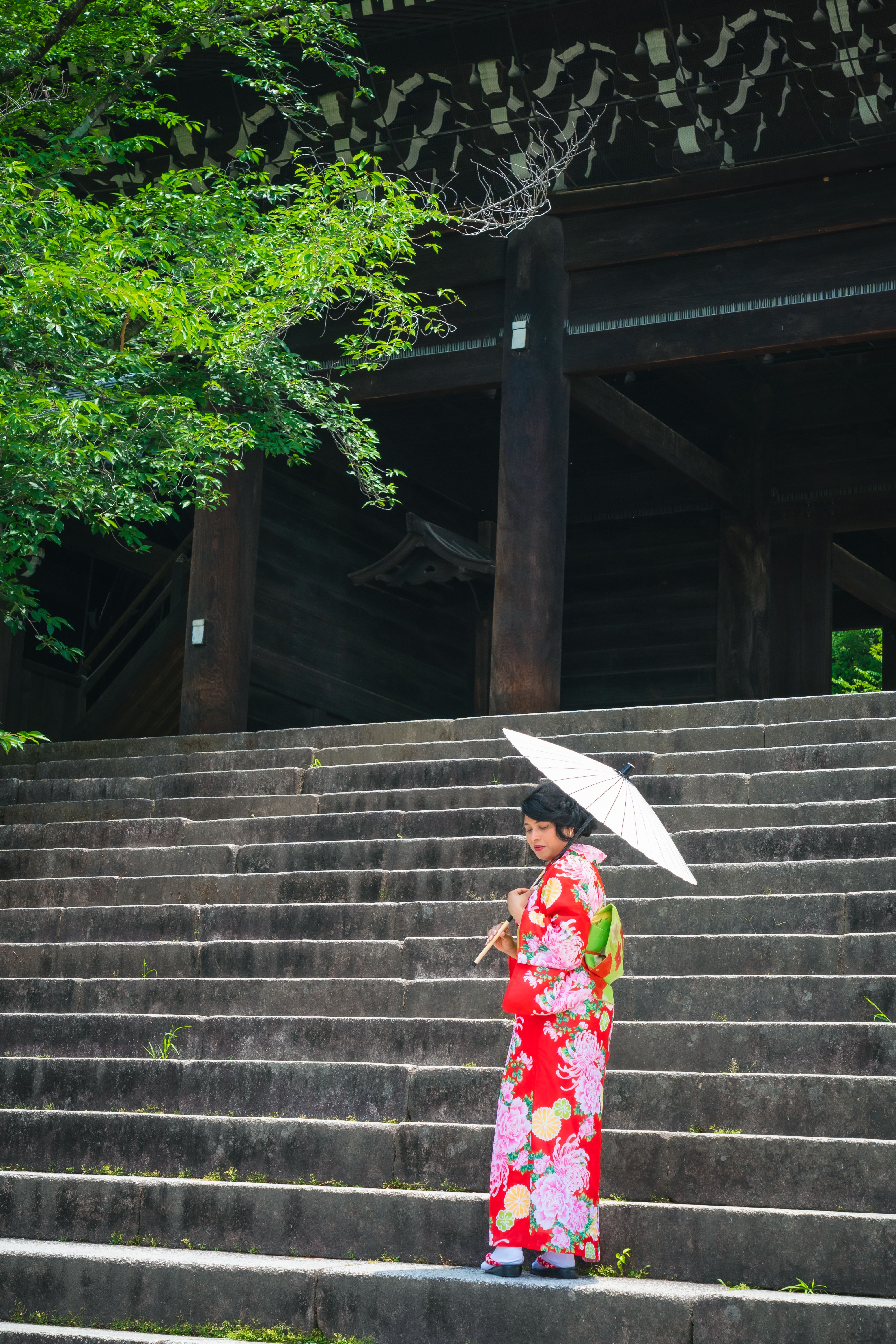
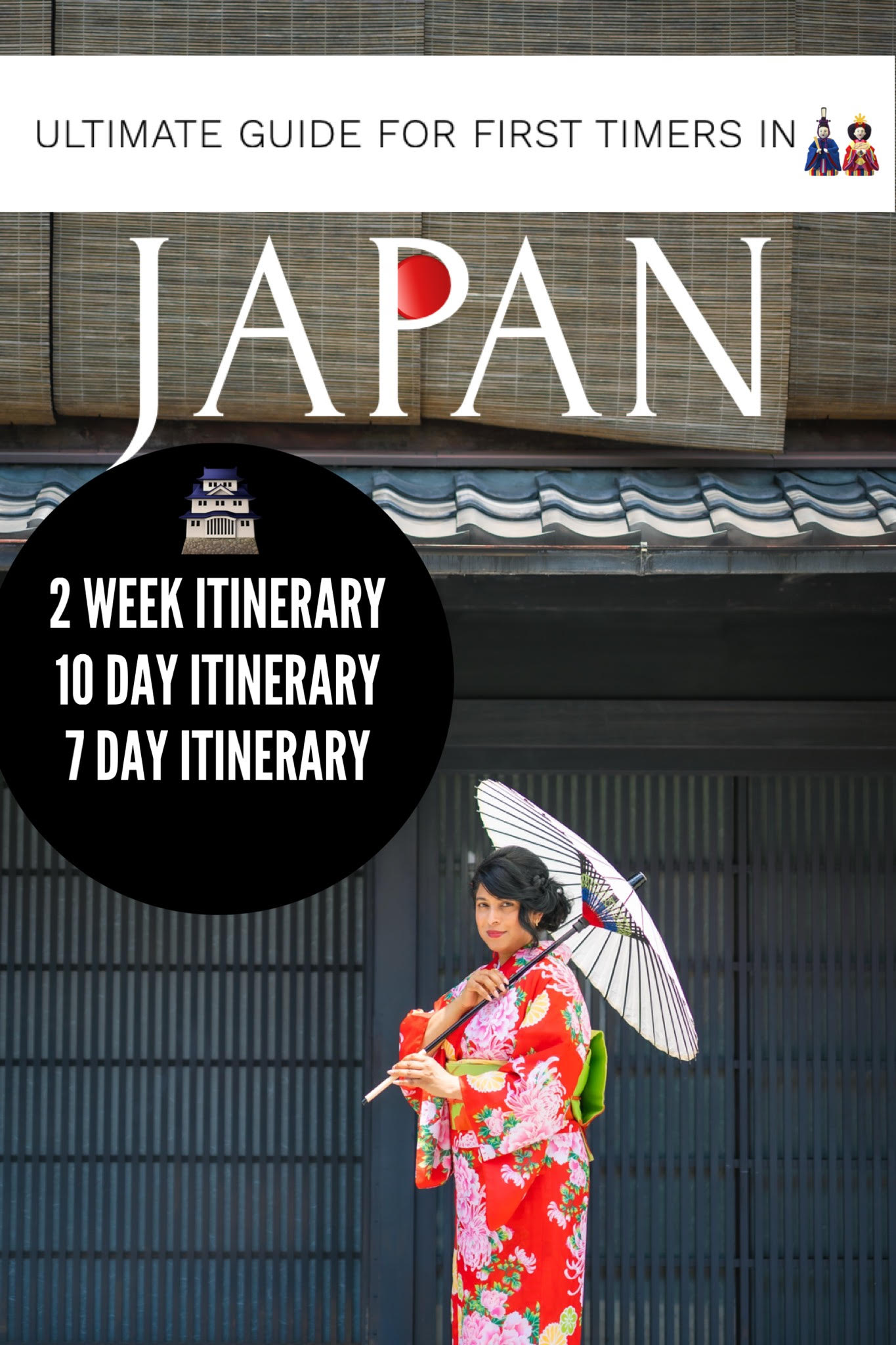
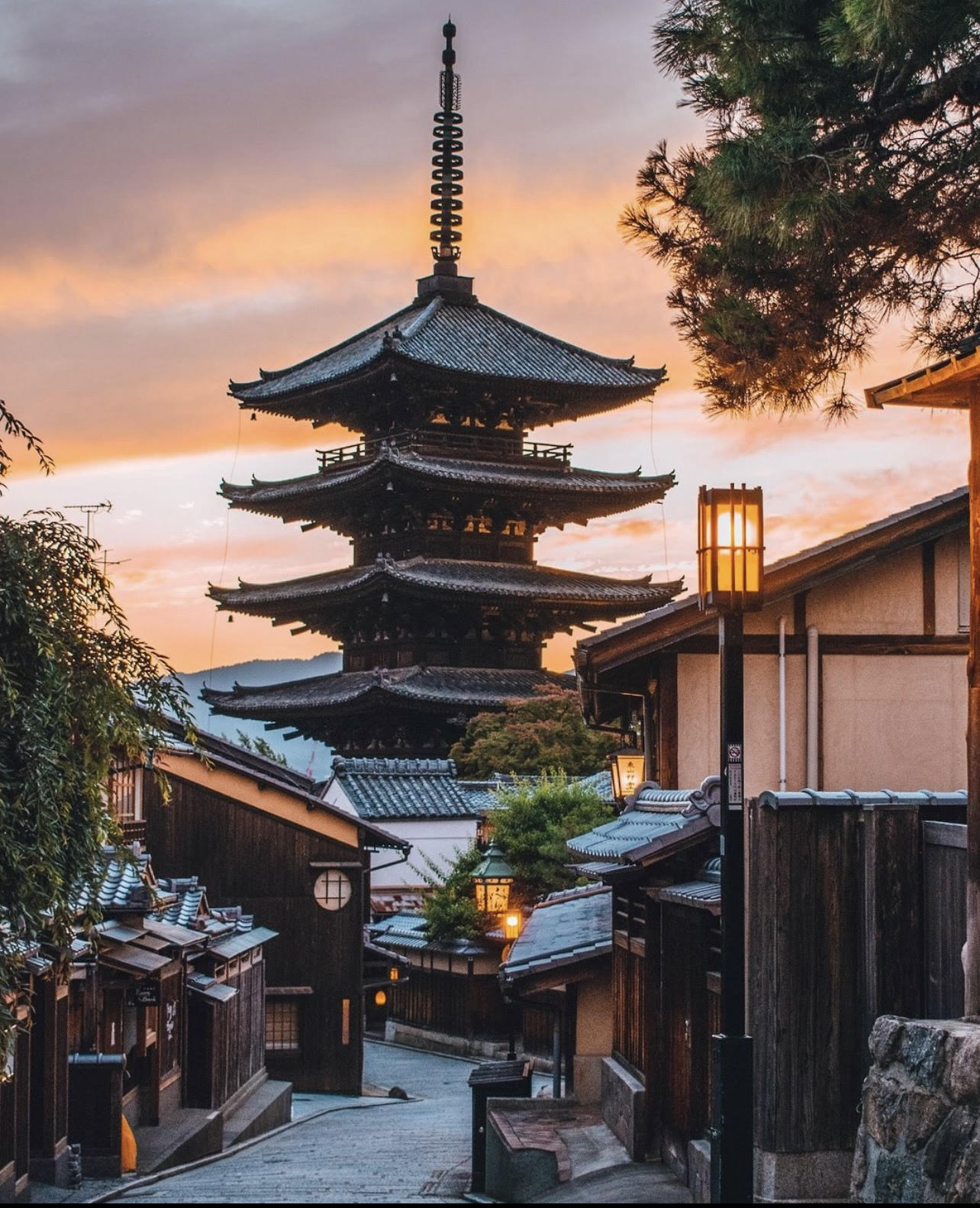
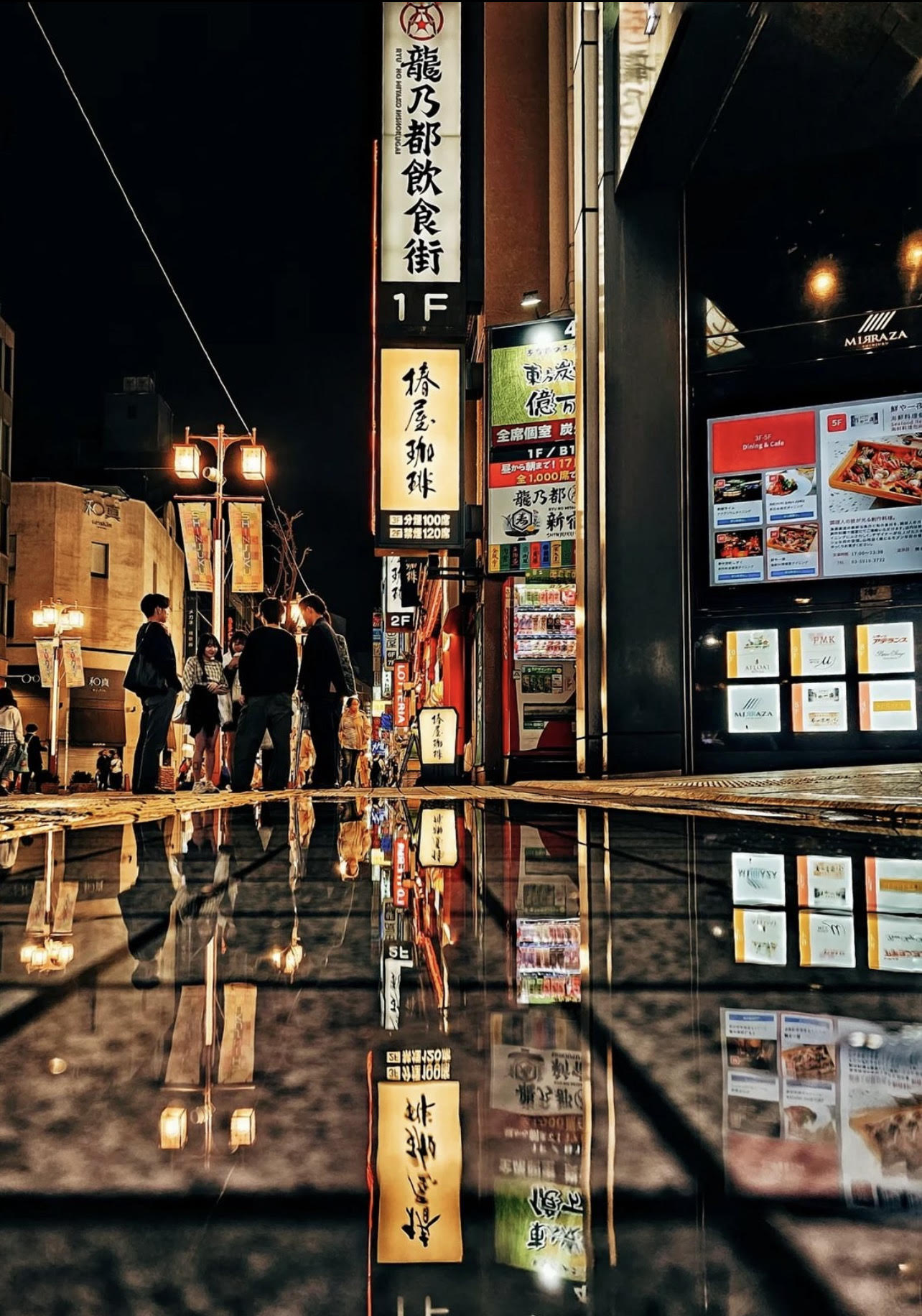
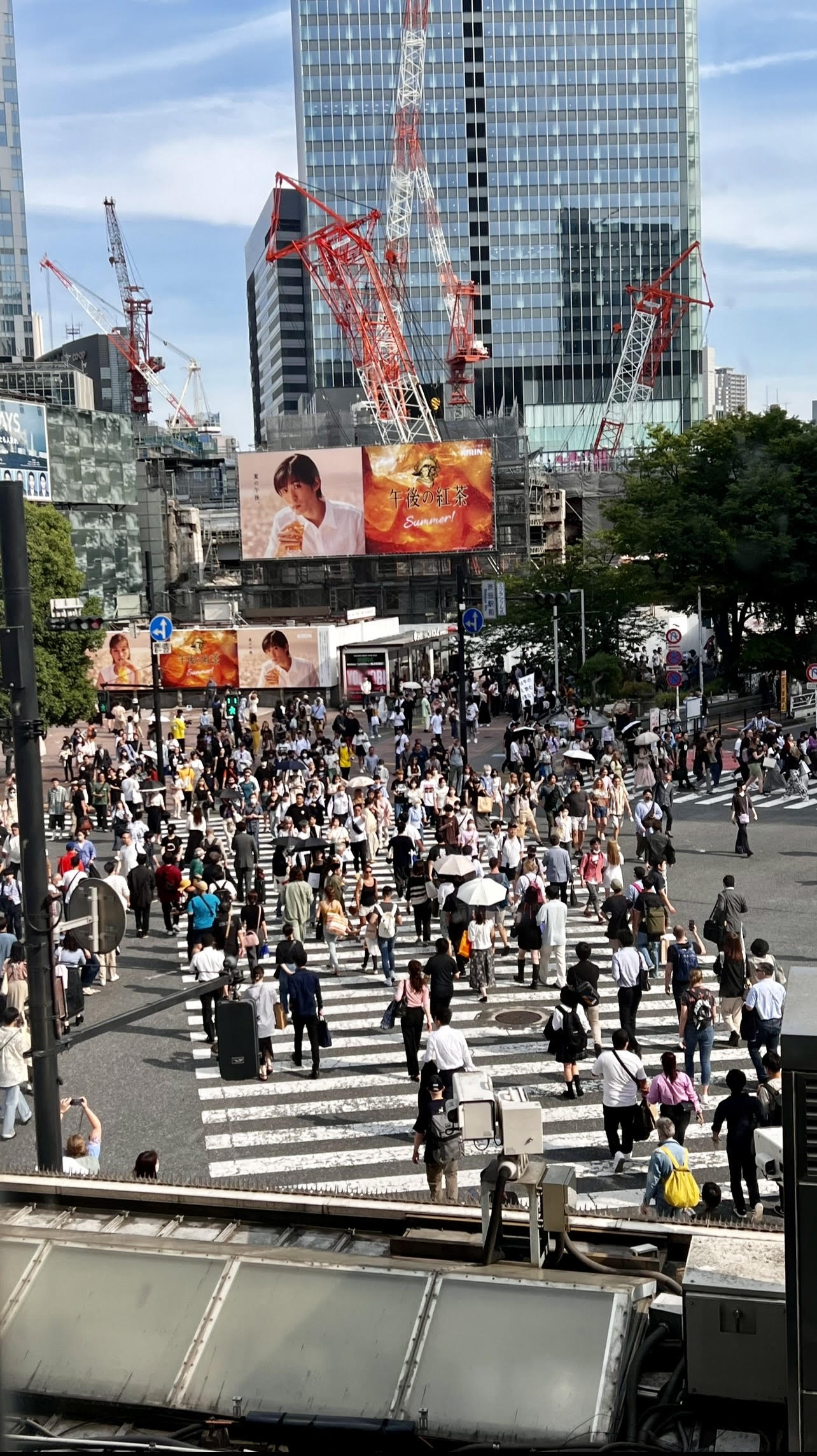
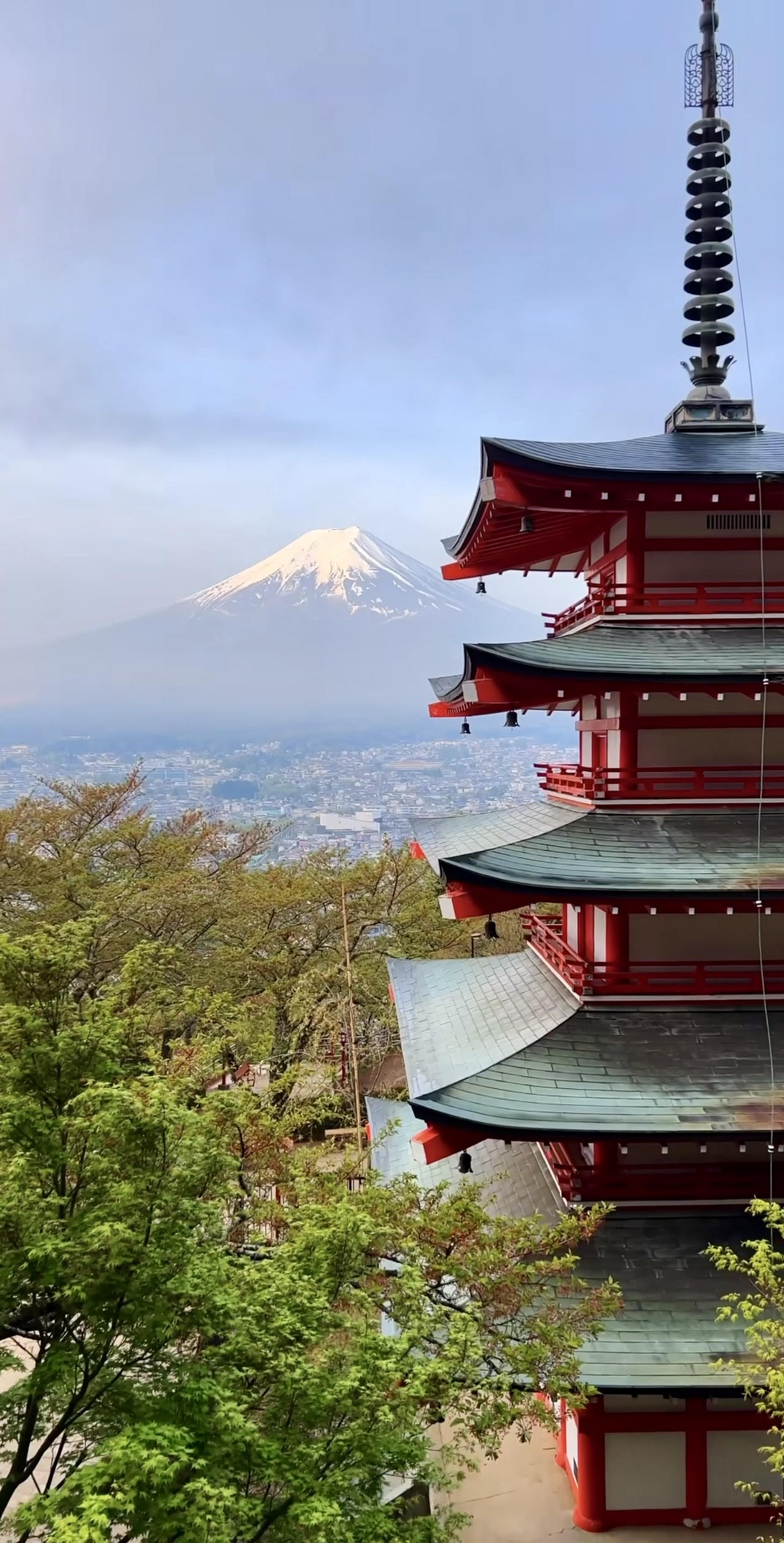
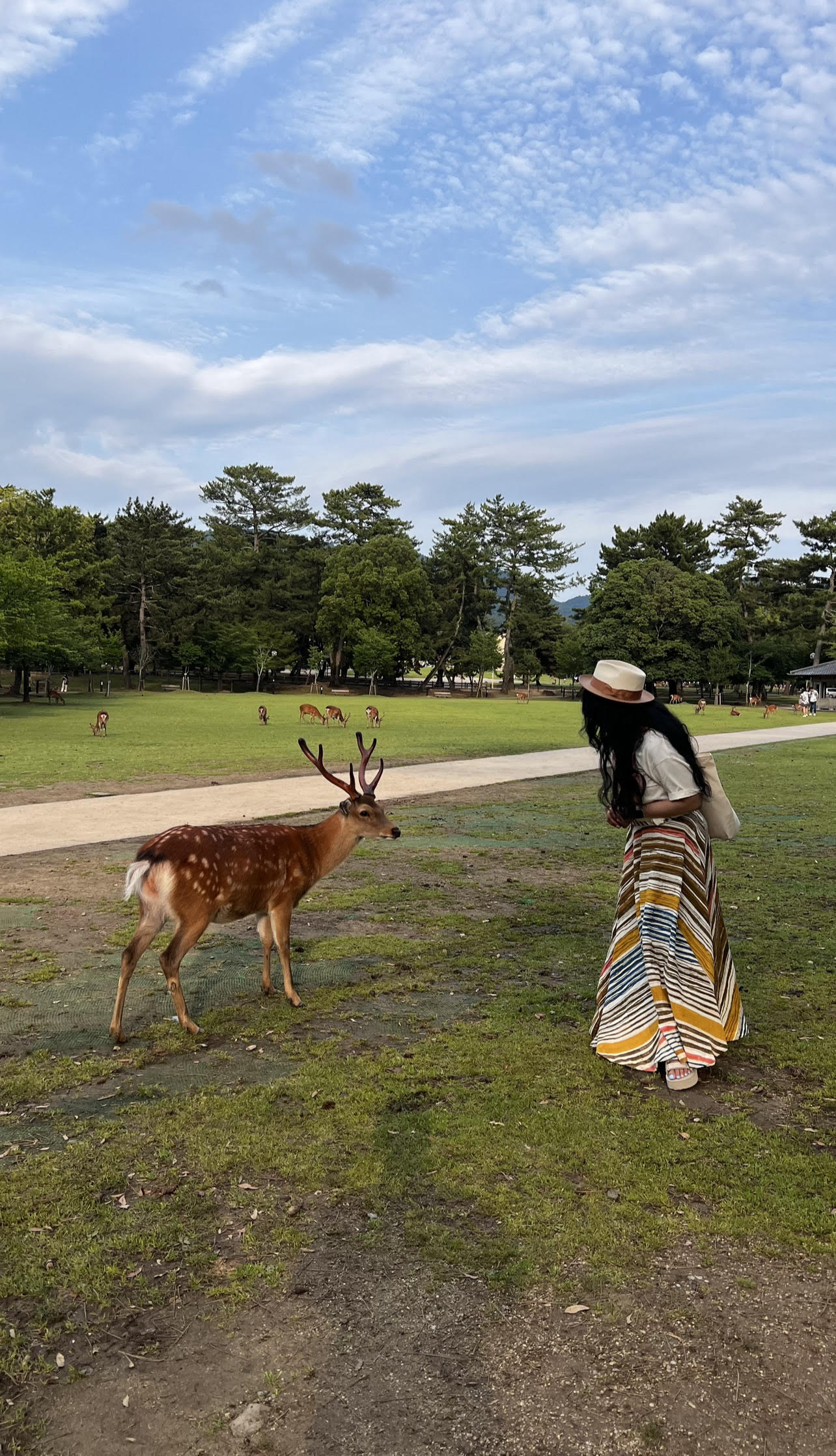
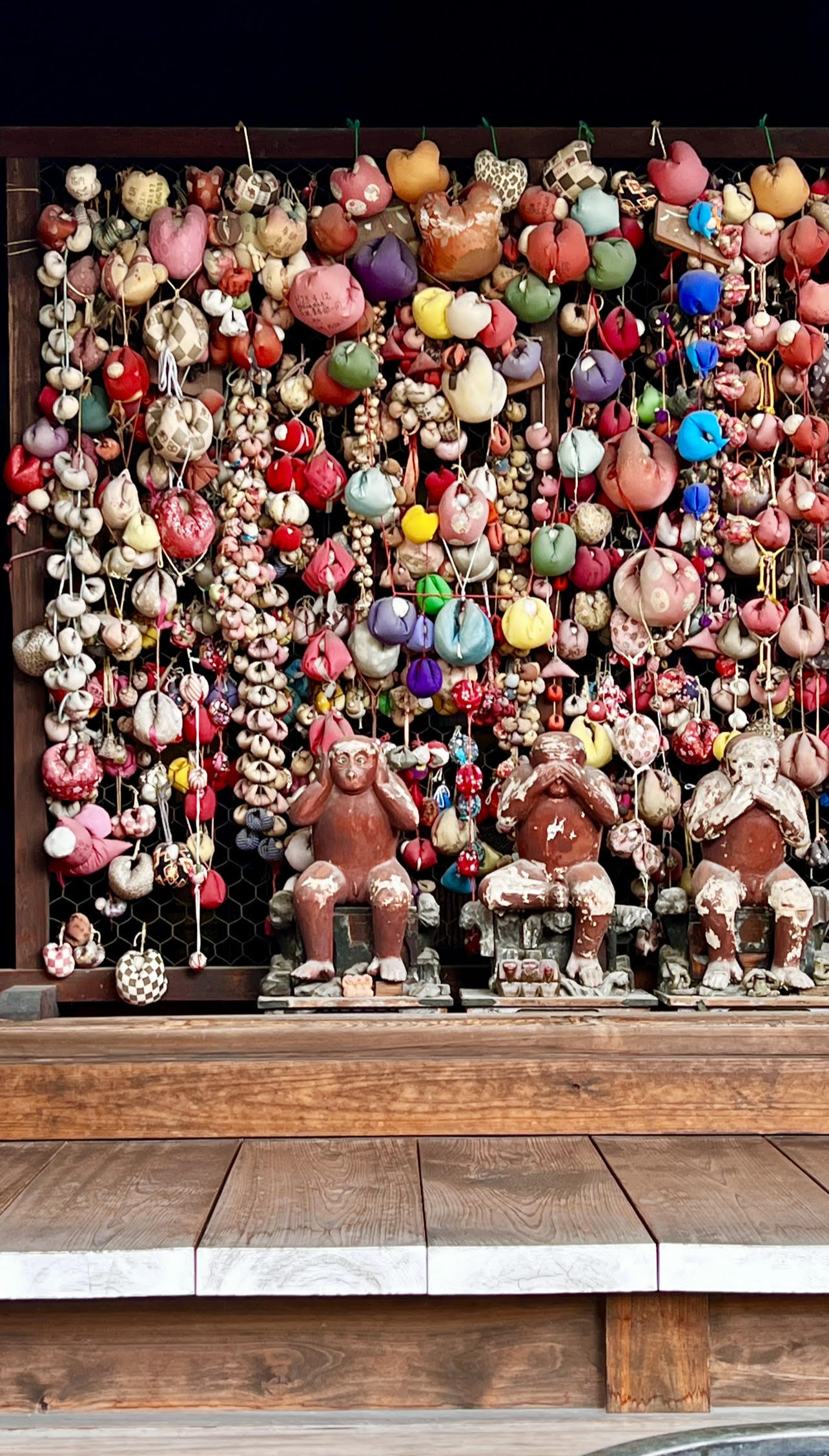
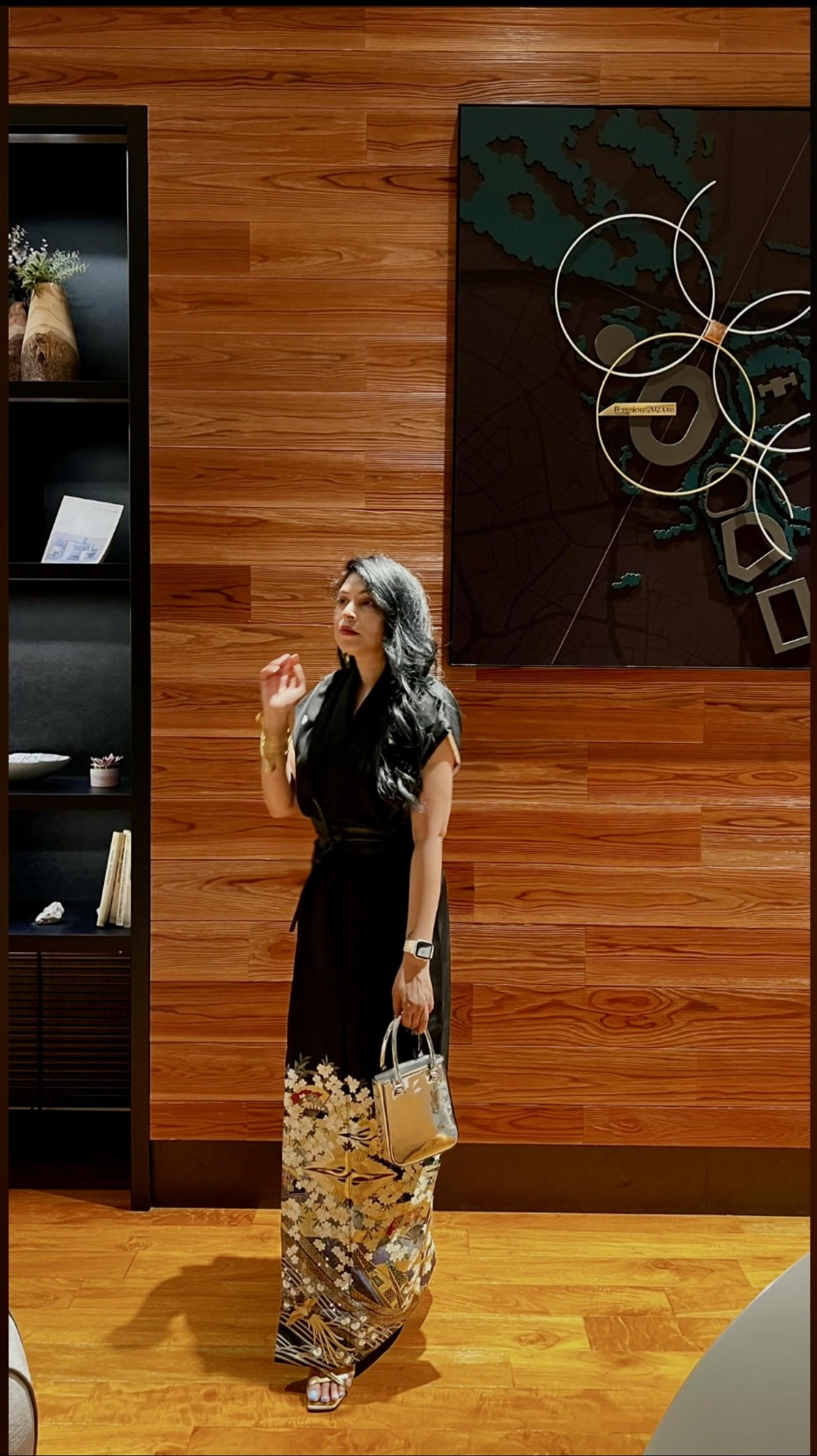
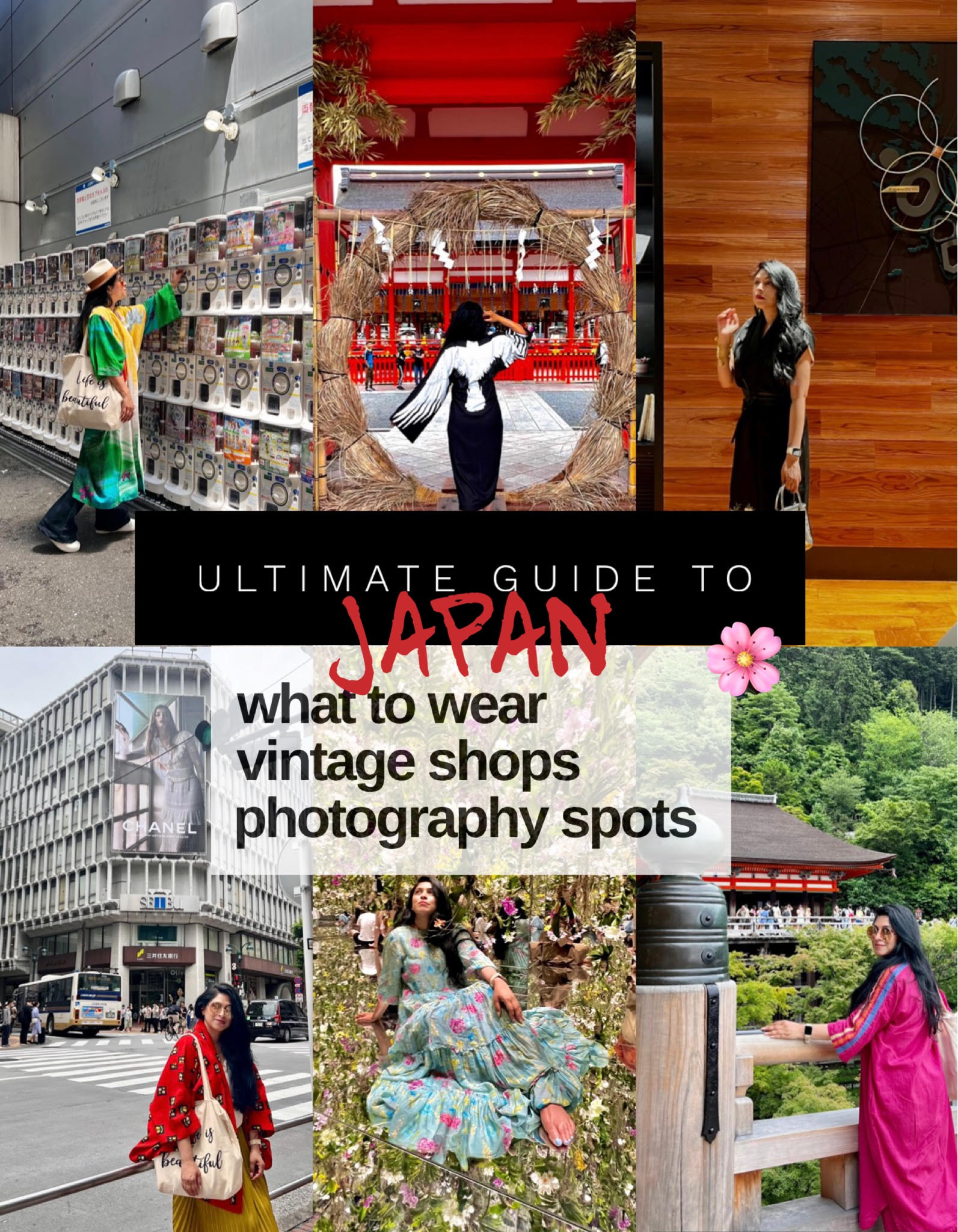
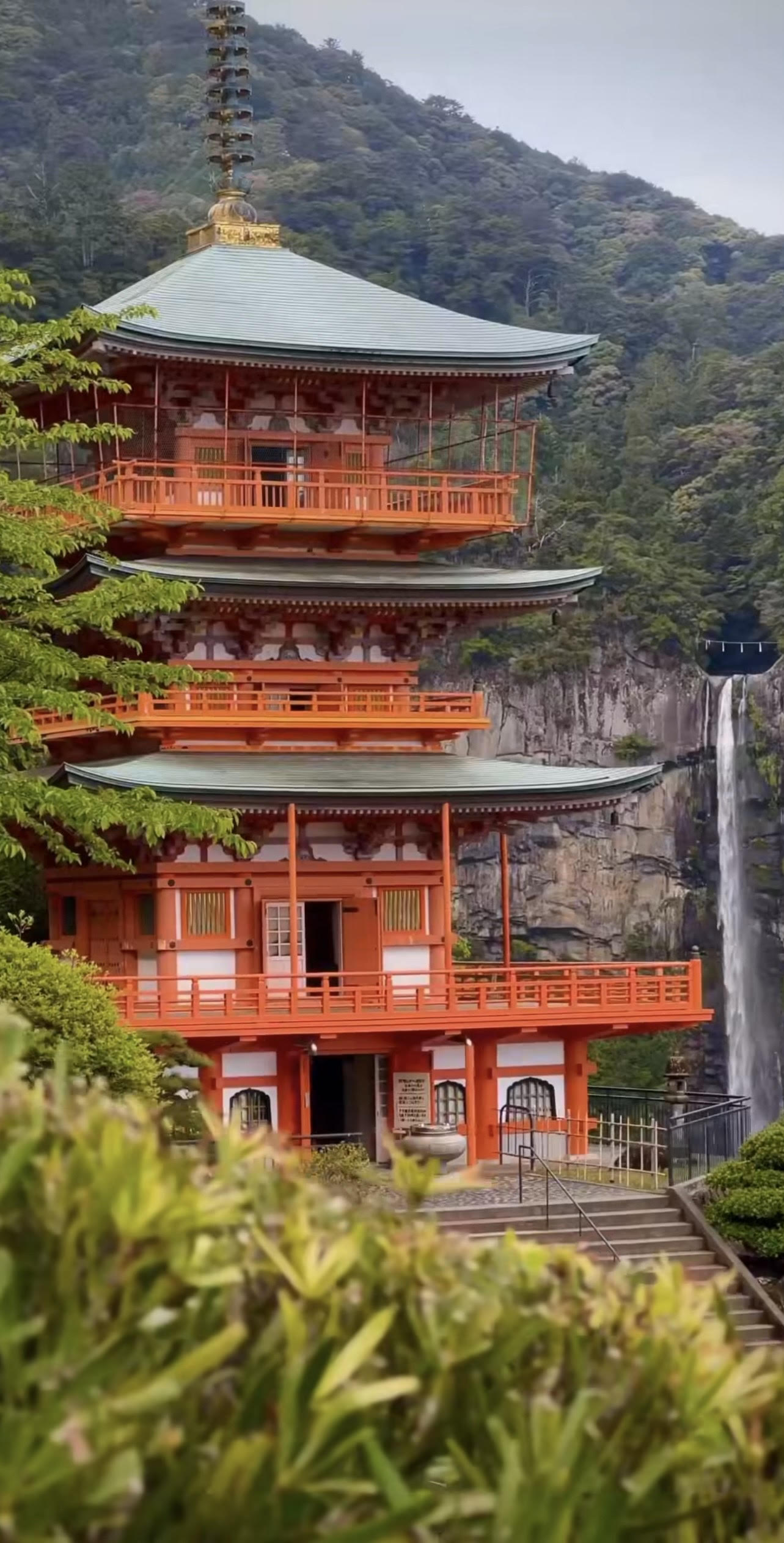
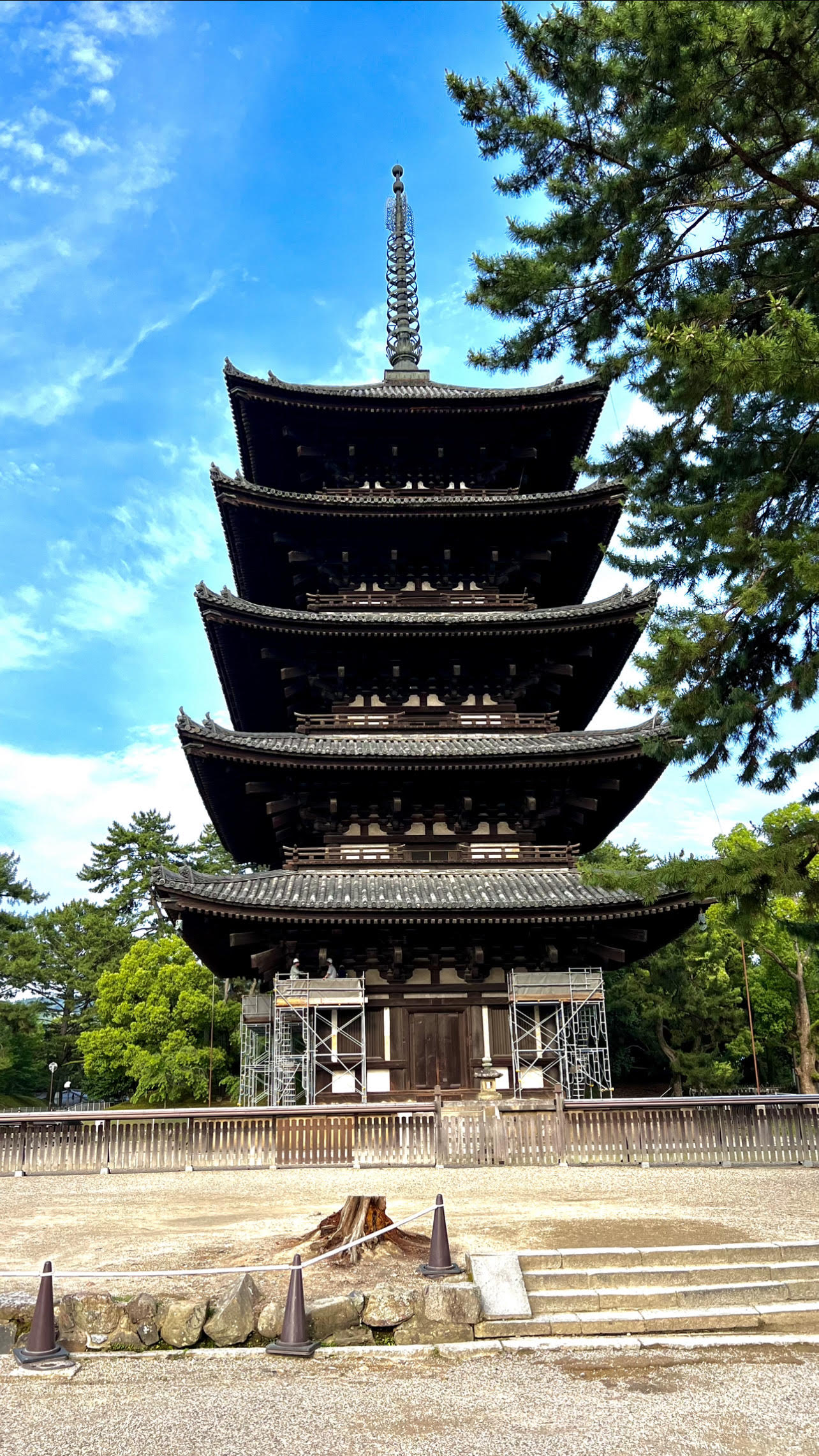
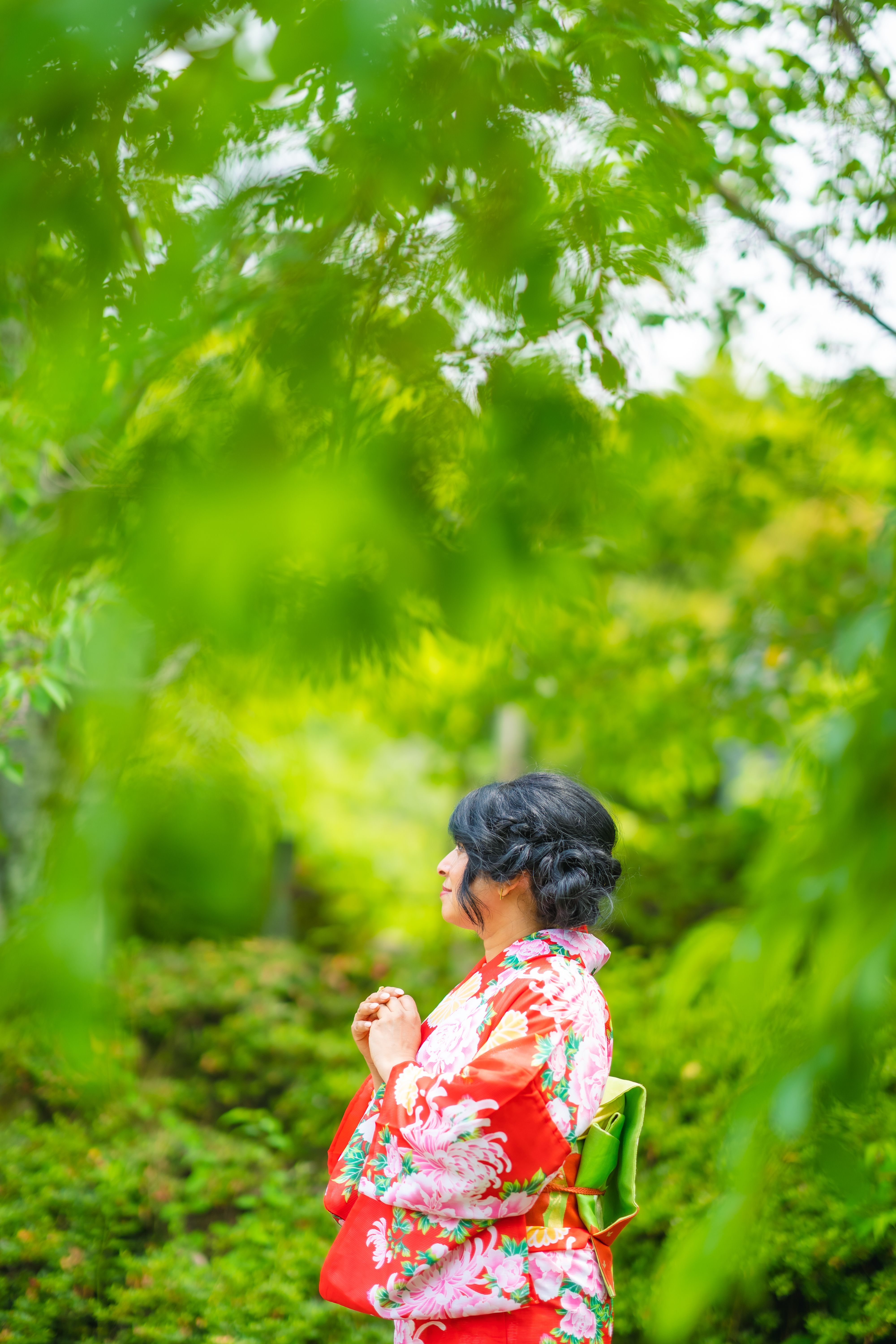
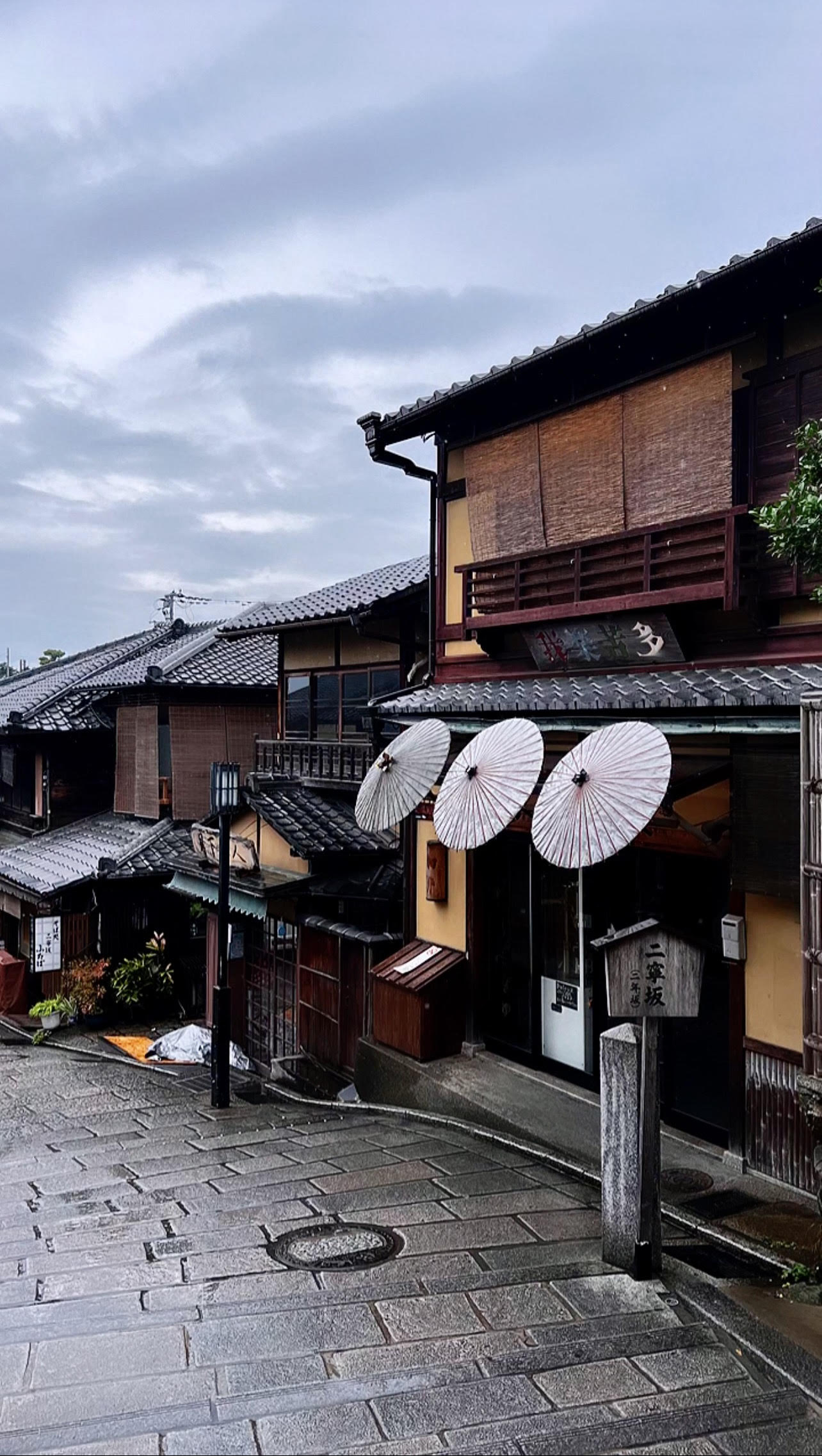
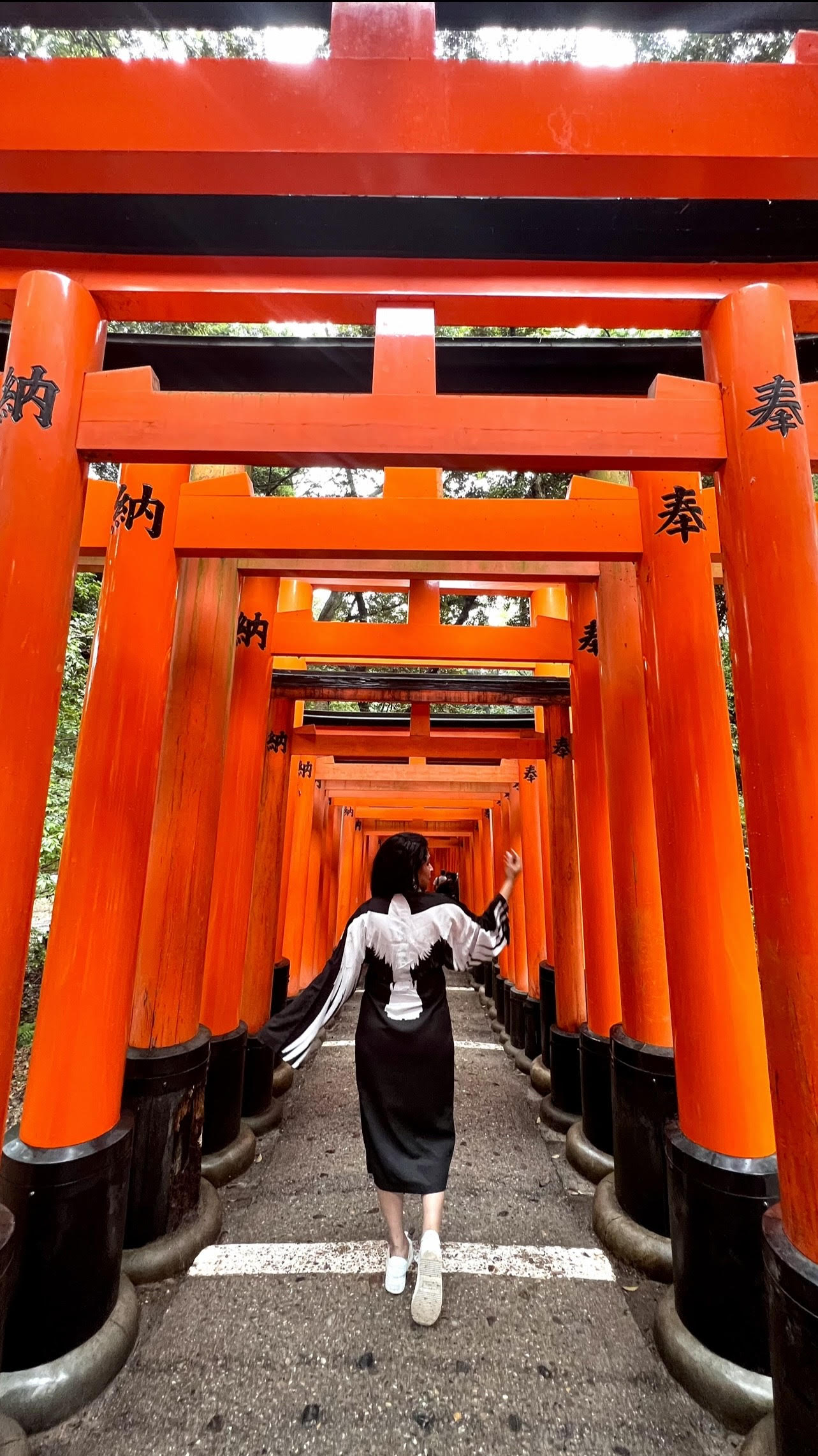
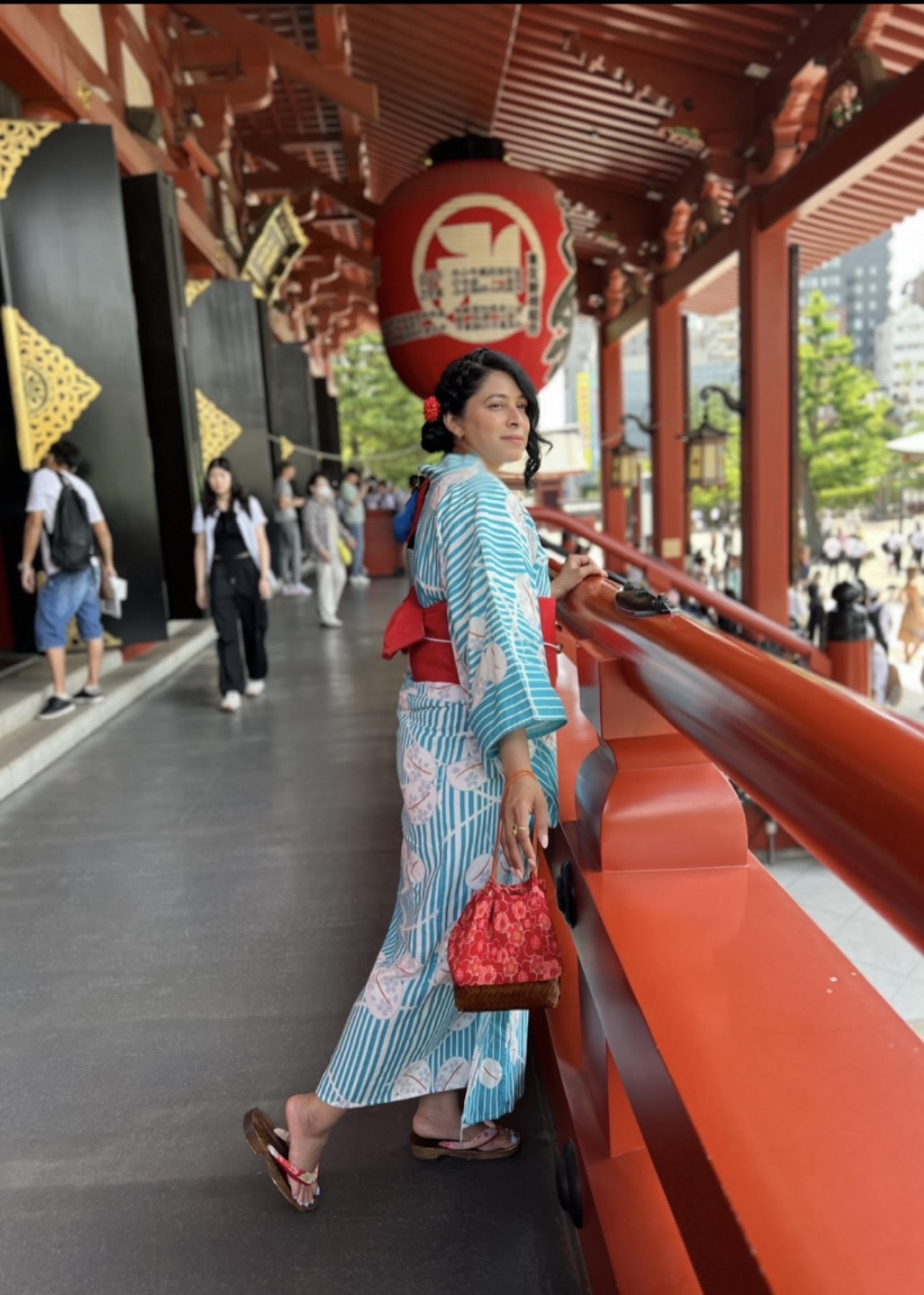
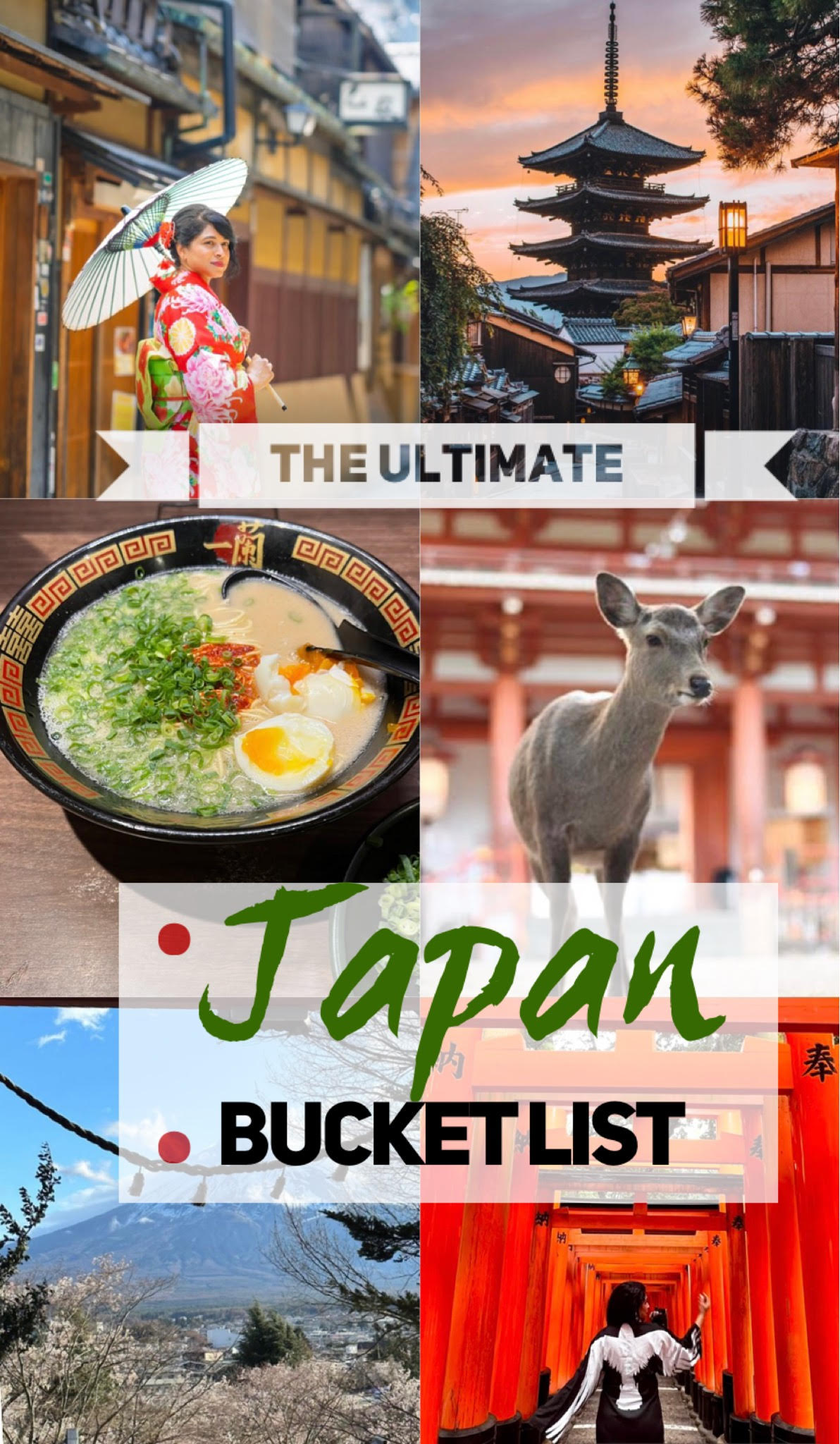
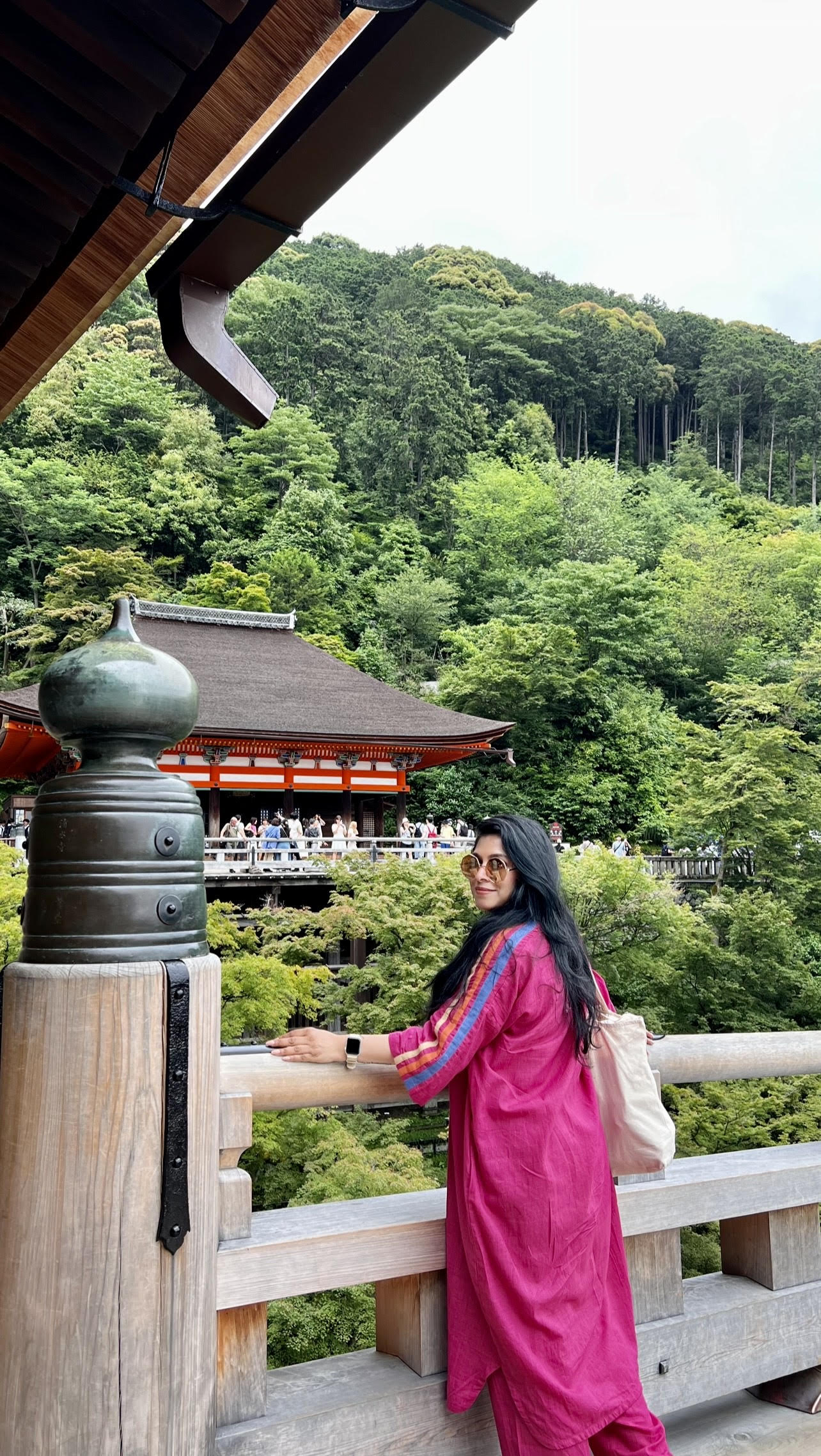
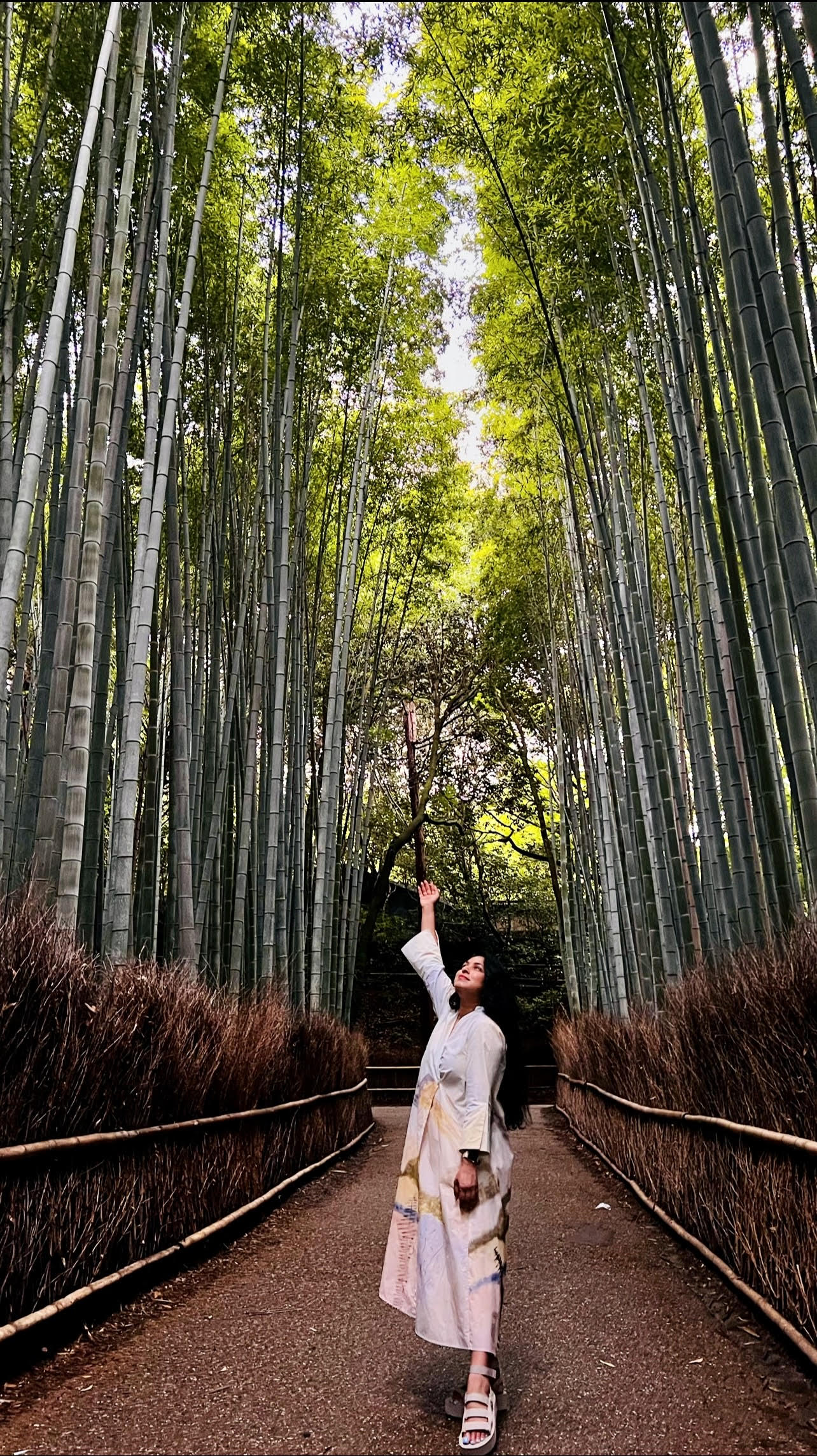
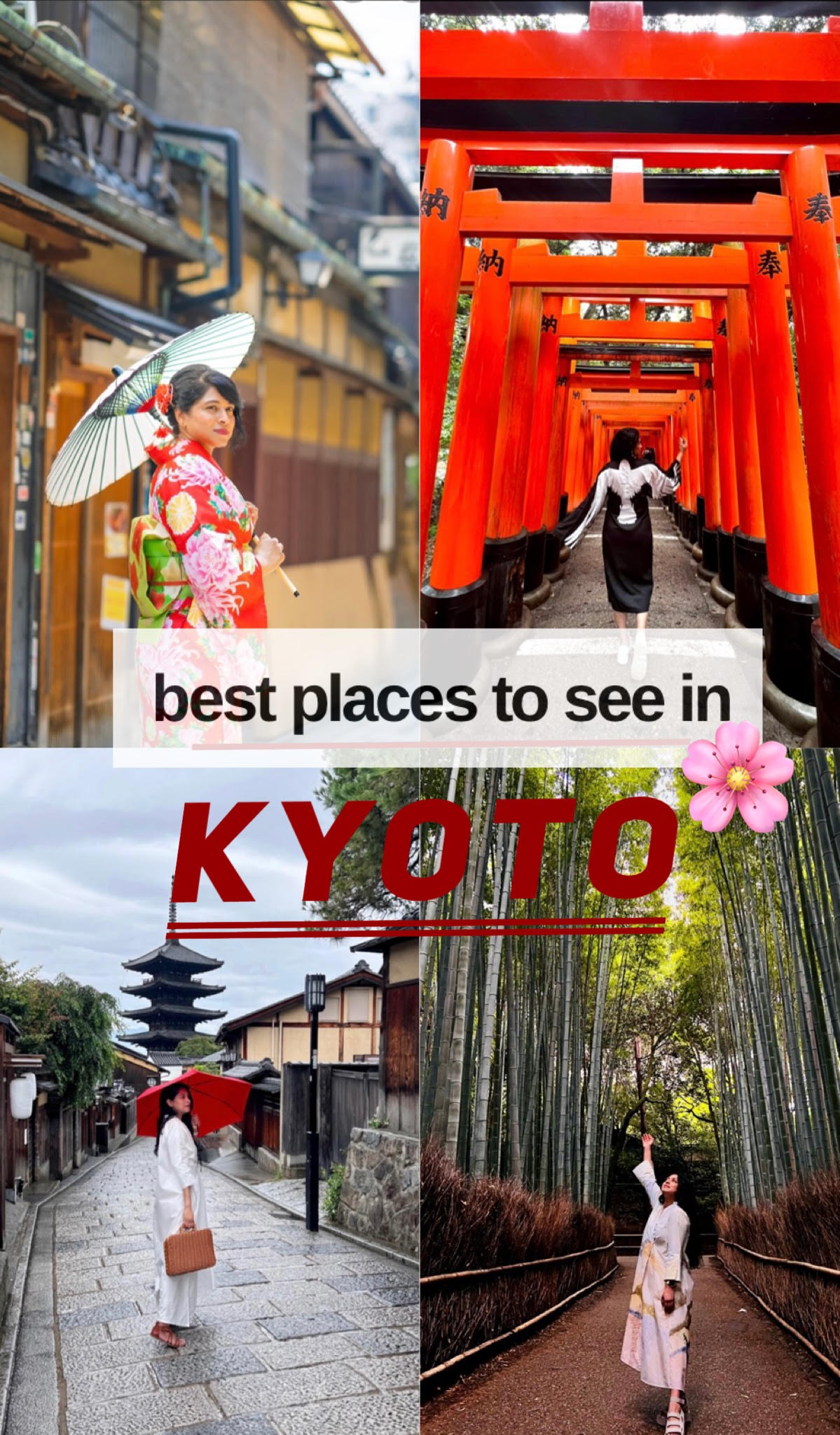
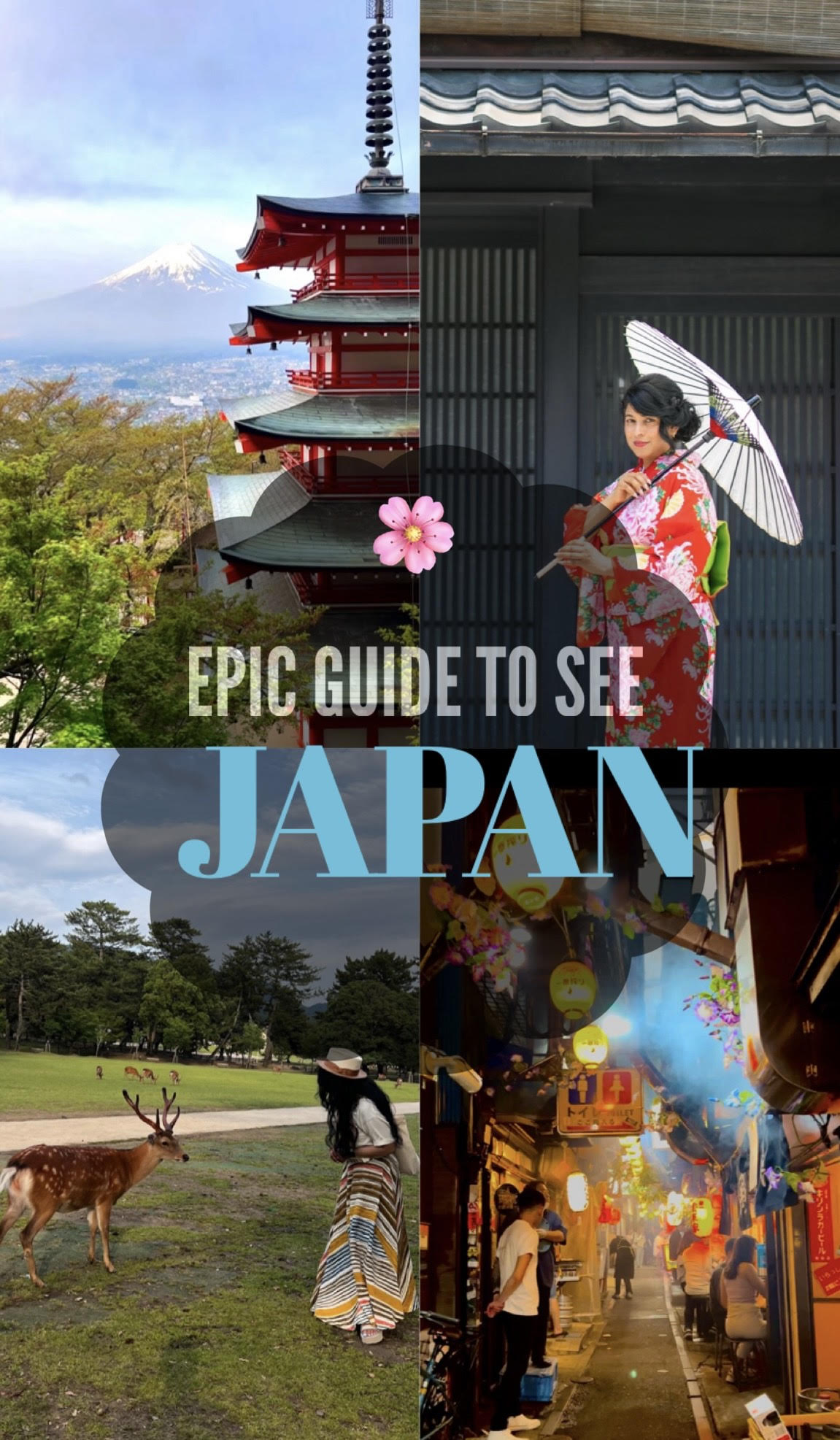
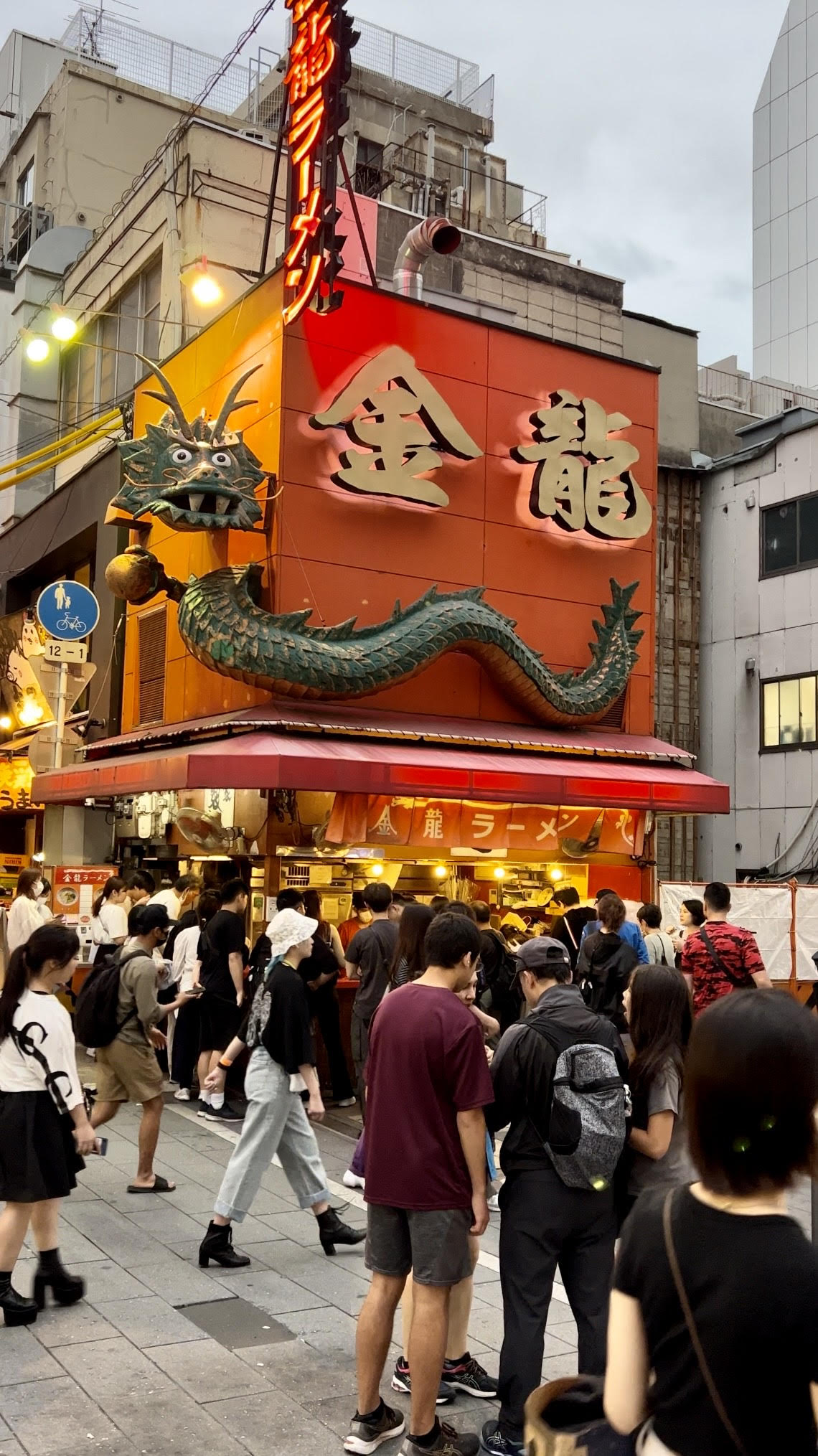
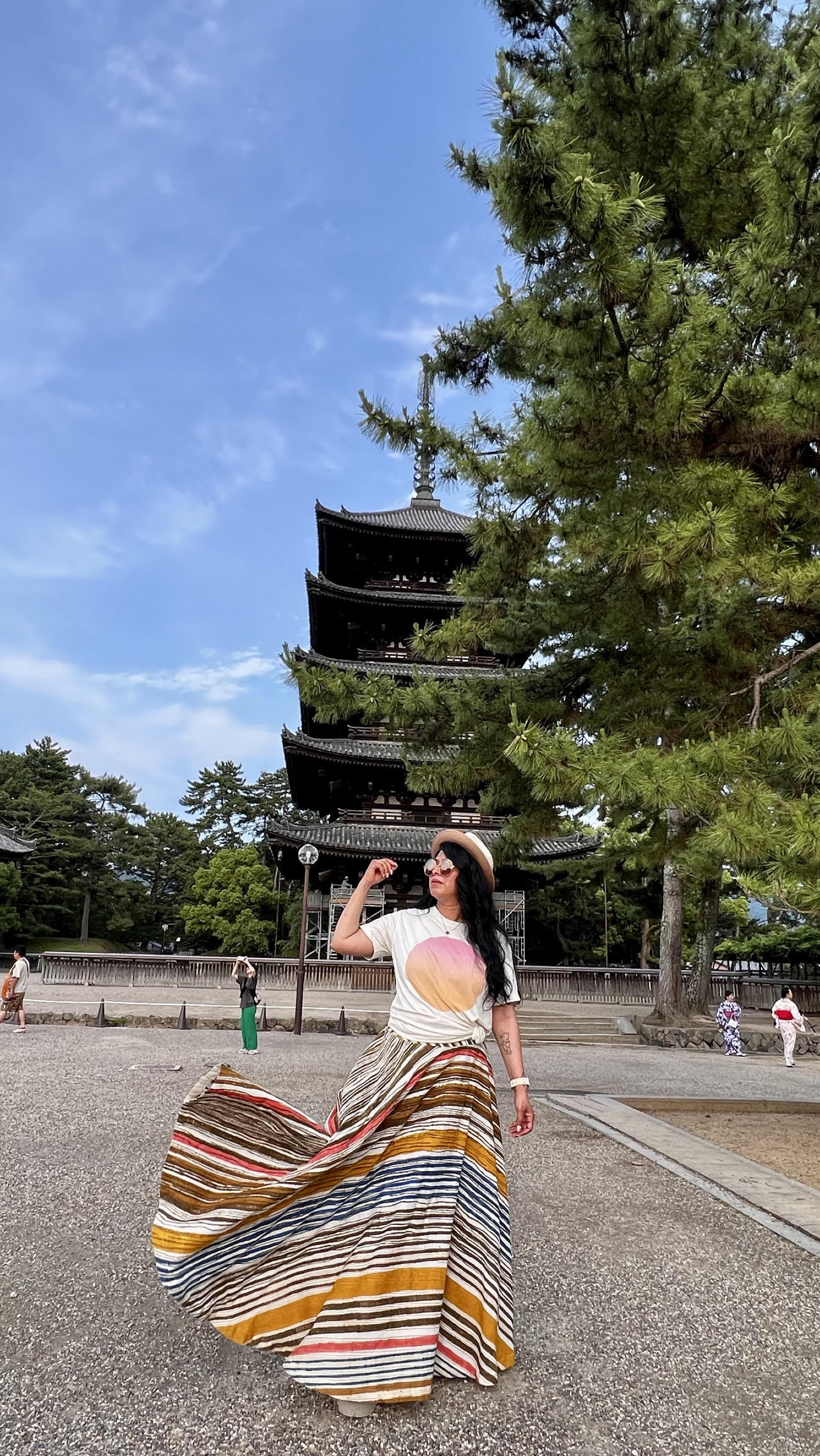
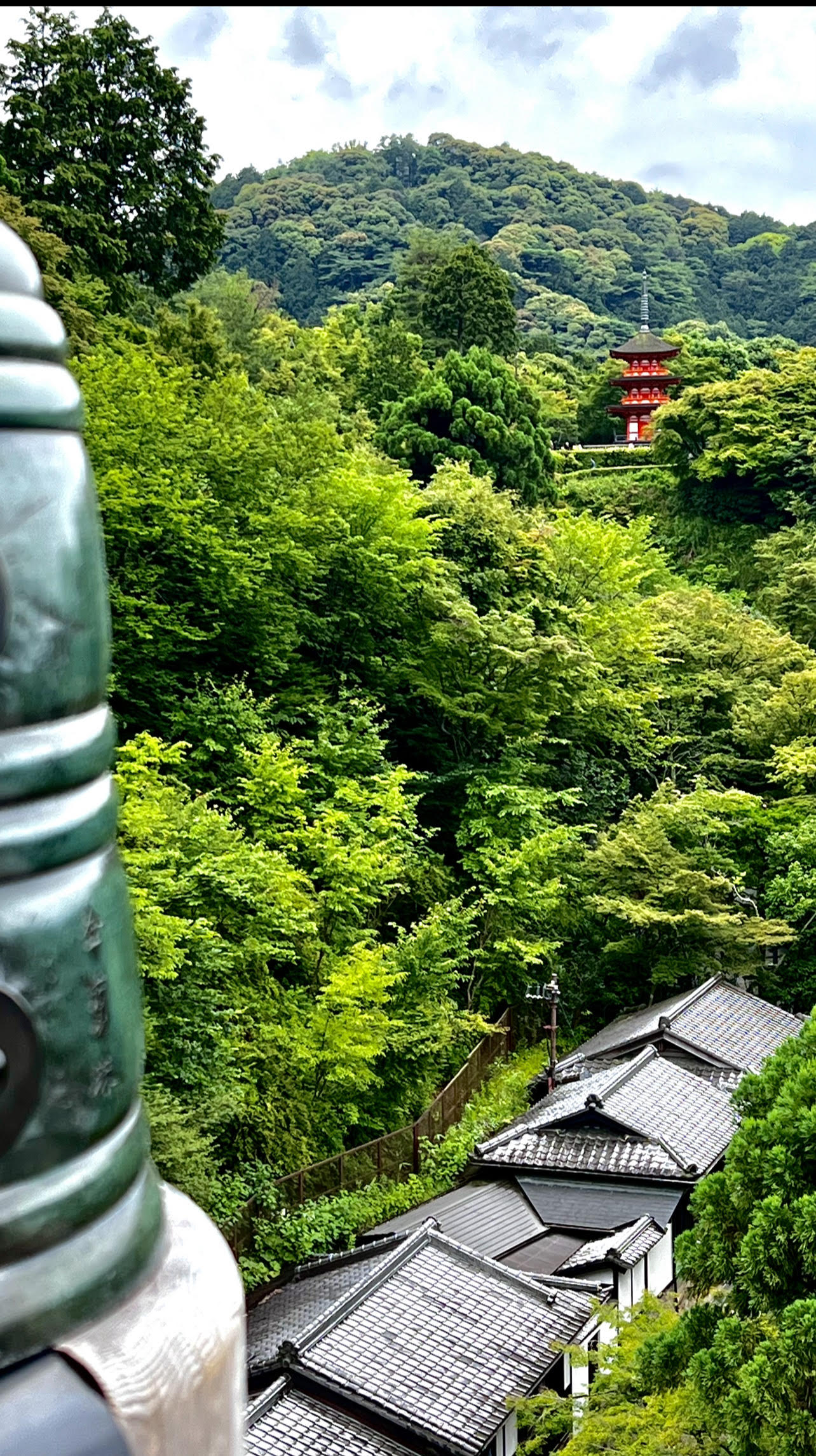
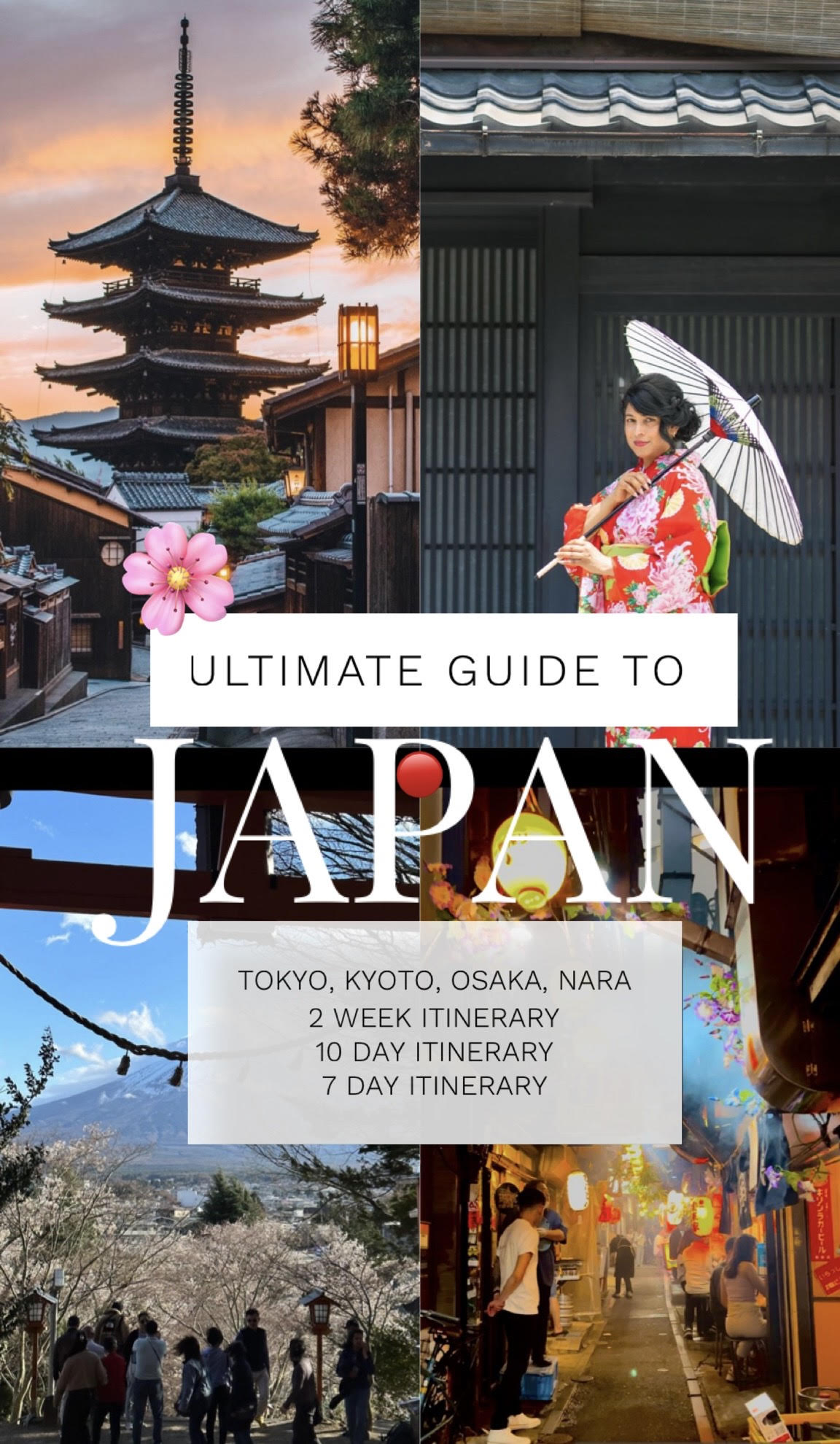
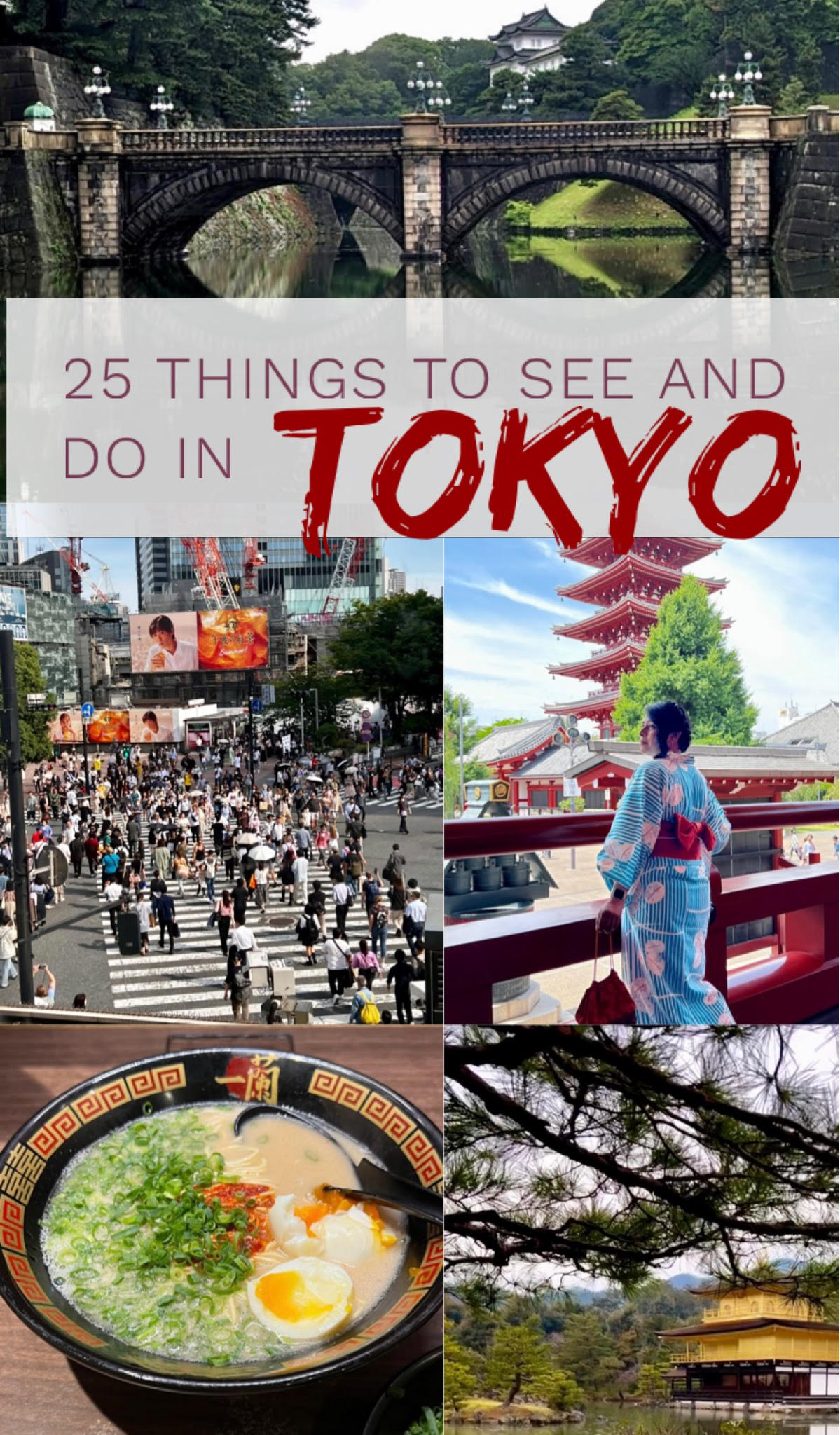
This is wonderful attractive information for me. After coming back from las vegas to lower antelope canyon. I will again read this Blog.